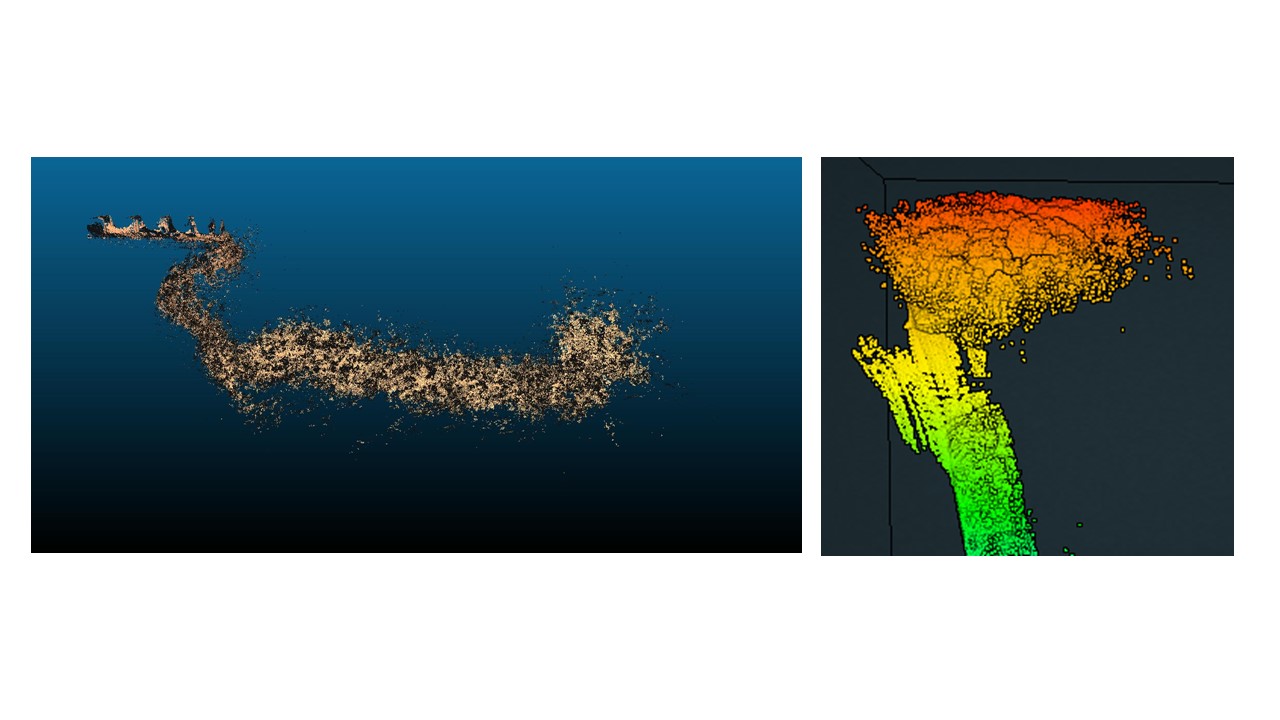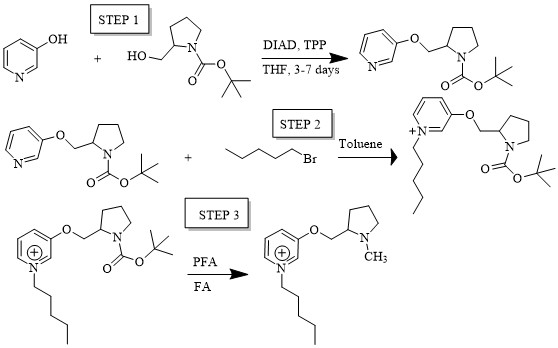The abstracts below are organized alphabetically by the presenter's last name.
A
Deformations of the Gauged Linear Sigma Model from a Hybrid Conformal Field Theory
Griffen Adams, Dr. Ilarion Melnikov
Department of Physics and Astronomy, James Madison University, Harrisonburg, VA 22807
One of the most exciting developments in modern theoretical physics is the connections between supersymmetric quantum field theories and complex geometry. Our research focuses on a particular supersymmetric theory, the gauged linear sigma model, and its connections to Calabi-Yau manifolds in toric varieties. The deformations of Calabi-Yau’s are well understood geometrically, but a subset of these, known as non-polynomial and non-toric deformations, have proven difficult to understand in the sigma model. While more naïve attempts at resolving this problem have failed, we make use of the hybrid conformal field theory construction to attempt to understand these deformations. The hybrid theory provides a geometric setting in which we can work out the deformations by computing a subset of the massless spectrum of the theory. In this talk, we begin by providing some background into the physics and mathematics used in our research. Then, we go in depth into the algebraic geometry used to study the deformations and present our findings. These results bring us closer to a resolution of the physics problem, while also giving some interesting insights into toric geometry.
Automating SAXs Data Processing and Analysis for Carbohydrates and Proteins
Ruby Adkins, Christopher E. Berndsen
Department of Chemistry and Biochemistry, James Madison University, Harrisonburg, VA 22807Small-angle X-ray scattering (SAXS) is a widely used method for deriving information about macromolecular structure, including shape, size, and conformational changes. The SIBYLS beamline (12.3.1) at the Advanced Light Source offers high-throughput SAXS and SEC-SAXS for users, sometimes collecting data on hundreds of samples in a single day. However, similar high-throughput preliminary analysis data tools to indicate if a sample is sensitive to radiation are lacking. Moreover, the existing tools are limited to proteins and sometimes nucleic acids. To aid the SIBYLS beamline in processing high-throughput data, we created a program to determine which data samples contain useful information. The program we created calculates which samples have acceptable values for the radius of gyration, mass, and the porod exponent. This python based program can scan through a test data set of 7500 files in under 20 minutes. To further the lab’s interest in starch degradation, we also developed a pipeline between GLYCAM, a program for running cloud-based MD Simulations, and FOXs, a web server for fitting SAXs Data. For visualizing a macromolecule’s conformations, it is most efficient to run Molecular Dynamic (MD) Simulations to find all computer observed conformations and then match the theoretical profile to the experimental. While this can be a tedious process, there are many computer automation programs to run the MD Simulations and fit the outputs to the SAXs data for proteins, yet none for carbohydrates. The inputs are a .dat file of SAXS data and a PDB file of a carbohydrate. Within 5 hours, the Colab document runs MD simulations of the carbohydrate in explicit solvent and then submits an ensemble of structures from the MD experiment to FOXs for fitting to the SAXS data. The next steps will be to reduce the time complexity of both programs and continue testing each programs’ efficiency and accuracy on large datasets. Finally, we aim to make both programs publicly available through the SIBYLS beamline.
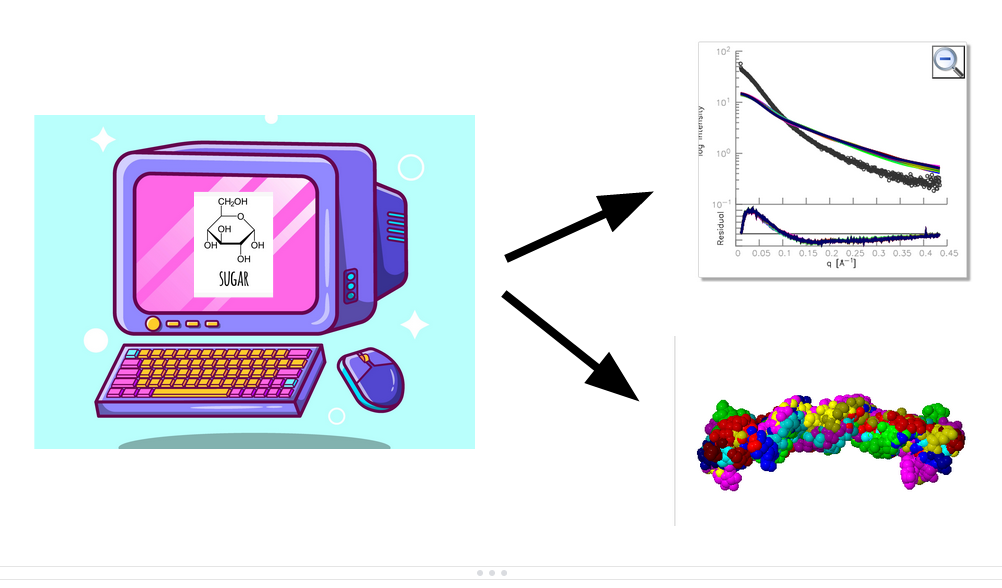
Using Time-Domain Electromagnetics and LiDAR Data to Characterize Water Flow Paths and Void Spaces in the Water Sinks Area, Highland County, VA, USA
Shamsuddin Ahmed1, Alondra del Mar Valle-Hernández2, Zoe Williams3, and R Shane McGary4
- Department of Geological and Environmental Sciences, Appalachian State University, Boone, NC 28608
- Department of Geology, University of Puerto Rico – Mayagüez Campus, Mayagüez, PR 00682
- Geological Sciences Department, Ohio University, Athens, OH 45701
- Department of Geology and Environmental Science, James Madison University, Harrisonburg, VA 22807
The Water Sinks area has a karst topography replete with sinkholes, a steep depression, and at least three known cave systems– Helictite, Owl, and Water Sinks. All three of these cave systems are located along the axis of the Chestnut Ridge anticline and occur in successively older strata. The water table in and around the Water Sinks depression has shifted over the past few decades, and the reasons for its migration and specific pathways have not previously been studied. In this study, we used time-domain or transient electromagnetics (TDEM or TEM) resistivity tomography data and a water flow model derived from airborne LiDAR (Light Detection and Ranging) using ArcGIS, in an attempt to characterize the water flow paths, groundwater movement, and void spaces in the study area. We collected nine TEM datasets using the Geonics G-TEM system at various stations throughout the area, many of which were in close proximity (if not coincident) to the locations where DC resistivity data for a concurrent study by Valle-Hernández et al. were collected. We expect our subsurface resistivity models to reflect those modeled from DC resistivity data by Valle-Hernandez et al. Combining TEM results with DC resistivity results and streamflow analyses will help us locate historical and current groundwater flow paths. By evaluating these data within the context of the geology near the anticline, we shall be able to show that the evolution of these cave systems were more than likely driven by the presence of an impermeable sandstone layer.
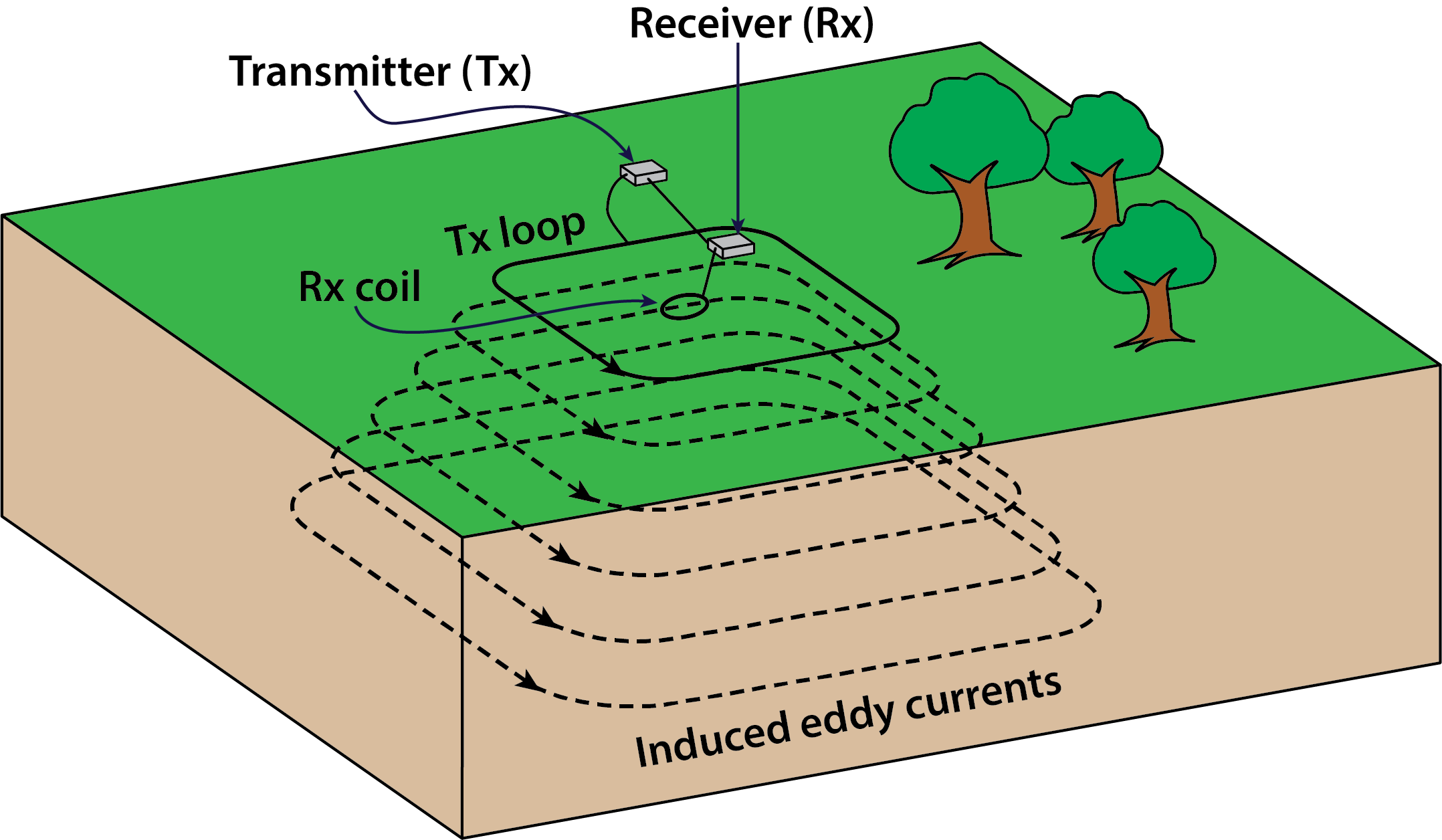
Effects of Combined Chaotropic and Kosmotropic Anions on Caffeine Aggregation Using ATR-FTIR
Heidi Arenas, Dr. Yanjie Zhang, and Dr. Gina MacDonald.
Department of Chemistry and Biochemistry, James Madison University, VA 22807
The Hofmeister series ranks ions based on their stabilizing effects. Ion’s ability to destabilize (salting-in) and stabilize (salting-out) proteins. It is important to understand the behavior of ions in aqueous solutions. In this study, caffeine was used as a model compound to study mixed ion interactions with solute molecules. We studied the combined effects of different kosmotropic and chaotropic salts on caffeine vibrations in both deuterium oxide (D2O) and water (H2O) using attenuated total reflection-fourier-transform infrared (ATR-FTIR). Different concentrations of salts were studied to determine the relative influence of each ion on caffeine aggregation. Our results show that NaSCN and NaClO4 shift the vibrations at ~1650 and ~1700 cm-1 to lower wavenumbers indicating less aggregation and increased solvation. The addition of Na2SO4 results in shifts to higher wavenumbers indicating increased aggregation and decreased solvation. Infrared studies of caffeine in a combination of salts show that the effects of NaSCN and NaClO4 dominate over the influence of Na2SO4. The mixture of two chaotropic ions shows an additive function.
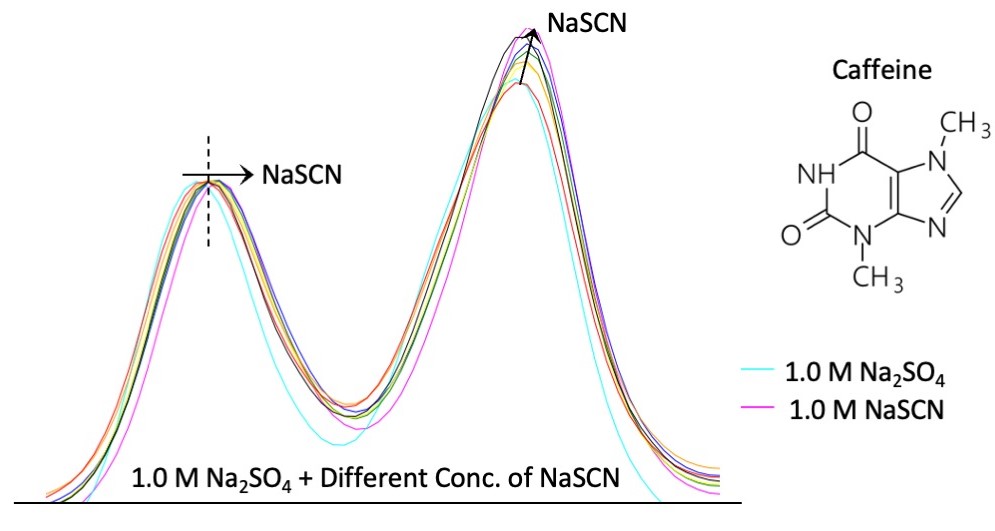
Characterizing optimal protein expression conditions for the human Cone-rod homeobox (CRX) transcription factor
Stephanie Arevalo-Giraldo, Aparna Gupta, Ali Carl, Kayla Stafford, Caroline Chu, and Dr. Ray Enke
Department of Biology, James Madison University, Harrisonburg VA, 22807
The retina is a layered neuronal tissue lining the back of the eye that converts photons of light into what we perceive as vision. This complex process of phototransduction requires coordination of distinct classes of retinal neurons such as photoreceptors (PRs). PRs initiate signaling by absorbing photons and converting their energy into a biochemical signal. The Cone-rod homeobox (CRX) gene encodes a protein that is a PR-specific transcription factor. Previous experiments in our lab demonstrate the importance of the CRX protein and its DNA binding domain for cone and rod PR function and development. However, there is little research on the CRX transactivation domain (AD) portion of the protein. It is known that the CRX AD has a proline and serine-rich region. We hypothesize that serines and prolines are crucial in the binding of p300 to the AD of the CRX protein. Therefore, our research goal is to purify CRX and coactivator proteins to investigate the optimal conditions that allow specific interactions with the CRX AD. We completed multiple small and large-scale protein expression experiments in E. coli to determine ideal conditions to induce protein expression for our different constructs. Protein expression was conducted by growing E. coli transformed with CRX, NRL, and p300 protein expression constructs in different media types, growth temperatures, and IPTG concentrations to identify optimal expression conditions. Pre and post-induction samples were run on SDS PAGE gels to visualize protein expression. Then, we chose the most promising constructs to purify using the fast protein liquid chromatography (FPLC) technique. Following our experiments, we found several different conditions that were optimal for CRX binding to transcriptional coactivators. Our ongoing study will provide further research on the role of CRX and how other proteins alter or bind to its structure possibly contributing to the diseased retina.
B
The Design, Synthesis, and Characterization of Analogues of Nicotine
Brian P. Bartholomew and Dr. Adebowale Ogunjirin
According to studies on Tourette syndrome, smoking addiction, parkinsonism, schizophrenia, epilepsy, and other neurologic diseases, several diverse clinical conditions might benefit from new nicotine-like drugs. Nicotinic drugs bind to acetylcholine receptors, widely distributed throughout the nervous system and other body parts. However, the issue with discovering new nicotinic drugs is the selectivity of compounds for acetylcholine receptor subtypes preferentially bonded by nicotine and the potential liability of addiction. In this study, we preferentially alkylated the pyridine nitrogen of A84543 by alkyl halides. The A84543 pyridine nitrogen was preferentially alkylated because it fine-tuned the distance between the two nitrogens in A84543, as observed from computer modeling. The distance between the two nitrogens is essential for the binding affinity of nicotine-like drugs to the acetylcholine receptor. This small change in the distance between the two nitrogens in A84543 can improve the analogs' selectivity for neuronal nicotinic acetylcholine receptors. Once the computer modeling review is concluded, the team aims to synthesize new nicotinic analogs utilizing the Mitsunobu synthesis method and verify with the Structure Analogues in Nuclear Magnetic Resonance (NMR).
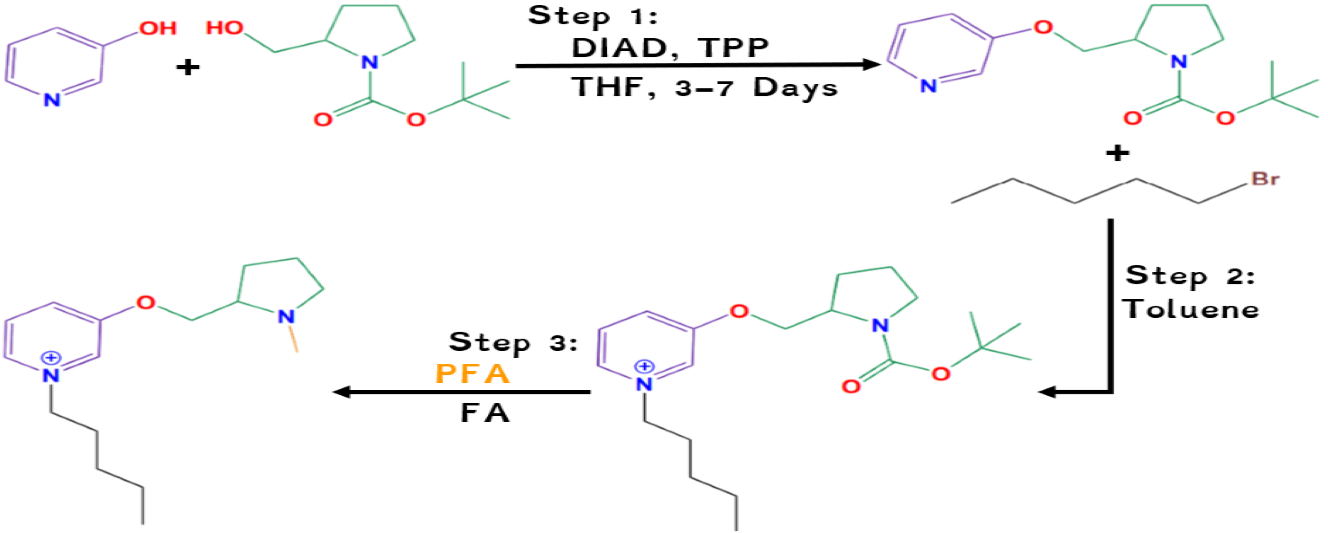
Peptide-boronic acid hydrogels: a controlled L-DOPA delivery system
Brooke Biltonen, Isaac Peregoy, and Dr. Gretchen Peteres
Department of Chemistry and Biochemistry, James Madison University, Harrisonburg, VA 22807
Supramolecular gels are a growing area of interest in the biomedical world due to their biocompatibility, their propensity for manipulation, and their ability to uptake and release drugs in a controlled fashion. Levodopa (L-DOPA) is a Parkinson’s drug that is enzymatically decarboxylated to produce dopamine in the brain. However, because L-DOPA is taken orally, it rapidly degrades in the gastrointestinal tract and leads to patient discomfort and diminished efficacy. Incorporation of L-DOPA into gel media has been shown to improve patients’ responses. However, there remains a lack of control over the drug’s release in these systems. Here, we report a supramolecular peptide-boronic acid gelator capable of incorporating and releasing L-DOPA via reversible boronate ester formation. A small library of peptide-boronic acids were synthesized via solid-phase peptide synthesis (SPPS). We found that self-supporting hydrogels formed with the triphenylalanine-boronic acid conjugate (FFF-BA) at greater than 8 mM at neutral pH. Using a combination of NMR titrations, diffusion ordered spectroscopy (DOSY), variable temperature NMR, and alizarin red S fluorescence assays, we determined that the L-DOPA reversibly binds to FFF-BA via boronate ester formation both in solution and in the gel network. This material has been fully characterized and has potential as an L-DOPA delivery system.
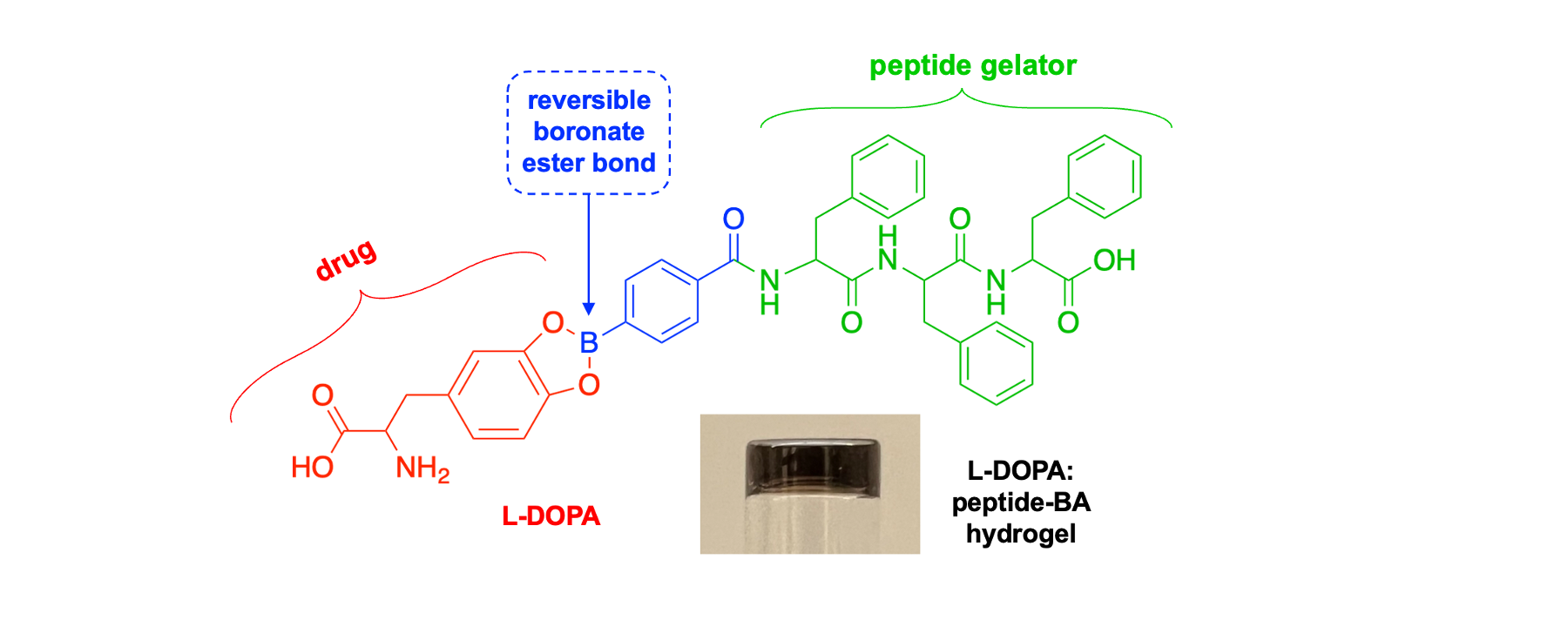
Investigating the role of the beta subunit of the nascent polypeptide-associated complex during misfolded protein stress response in C. elegans
Celina Bui, Alana Slekar and Tim Bloss
Department of Biology, James Madison University, Harrisonburg, VA 22807
The nascent polypeptide-associated complex (NAC) is an alpha/beta heterodimeric chaperone that plays a role in cellular proteostasis by helping proteins fold and localize during translation. In addition, the individual subunits act as transcription factors during misfolded protein stress to mitigate stress and save the cell from death. Imbalances in NAC subunit levels are linked to neurodegeneration and cancer, so understanding how they function in healthy cells and those experiencing stress may provide insights into how NAC imbalances contribute to disease. I am studying beta NAC function in the roundworm C. elegans, a model organism with a highly conserved beta NAC, to better understand how this protein functions in human cells. Our hypothesis is that during strong misfolded protein stress, C. elegans beta NAC is cleaved to eliminate its protein-saving function and drive the stressed cell to die by apoptosis. To test this hypothesis, I am comparing stress responses in C. elegans with a closely related species C. brenneri, which expressed an uncleavable version of beta NAC, to determine the putative role of beta NAC cleavage in stress-induced outcomes in C. elegans. Our results show that C. brenneri survives heat-induced misfolded protein stress four time longer than C. elegans, displaying species-specific phenotypes that indicate an uncleavable version of beta NAC may protect C. brenneri from stress-induced immobility and mortality in ways the cleavable version of beta NAC in C. elegans cannot. These insights will likely help us understand the function of human beta NAC in both healthy and diseased cells.
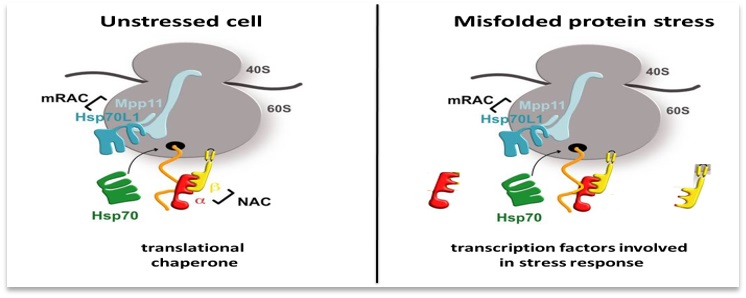
C
12α-Hydroxysteroid Dehydrogenase: Characterization, Crystallization Screenings, and Kinetic Studies with Deoxycholic Acid
Chloe Caplinger1 2, Larisa Ramos Diaz1 2 and Dr. Rippa Sehgal2
- Department of Chemistry and Biochemistry, James Madison University, Harrisonburg Virginia
- Department of Chemistry, Bridgewater College
Bile acids are associated with gastrointestinal cancers and the enzymes that act on the bile acids are hydroxysteroid dehydrogenases produced by the microbiota in the gut. One such microbe, Methanosphaera stadtmanae is an archaeon that has recently been detected to have an effect on the gut’s immune and epithelium systems. Using recombinant plasmid from M. stadtmanae, we have overexpressed the 12α-hydroxysteroid dehydrogenase (12α-HSDH) in aerobic conditions by IPTG induction. The 12α-HSDH is responsible for the conversion of toxic bile acids into less toxic bile acid—that are not linked to cancer. After optimization we found that using ¼ of the flask volume for growing cultures generated 2x bigger cell pellets as compared to half of the flask volume determine the important of aerobic conditions in the cell growth. The lyzed pellets were confirmed for the activity and protein was purified using Immobilized Metal Affinity Chromatography. Purification was confirmed using SDS-PAGE gel. 12α-HSDH converts the hydroxyl group at the 12-C position of the bile acid to a carbonyl group in the presence of a pyridine nucleotide. We have discovered that 12α-HSDH is NADP-dependent in bile acid reactions and does not show any activity in the presence of NAD. They phylogenetic analysis has placed the enzyme in the short-chain dehydrogenase/reductase (SDR) family. We have focused on the kinetics of conversion of deoxycholic acid into 12-oxo lithocholic acid using 12α-HSDH and NADP. This was done by spectrophotoscopically at A340. The steady-state kinetic parameters for the NADP reduction are determined by the method of initial rates. Initial velocities for the enzyme are measured as a function of DCA concentration at fixed NADP concentration. The rates are fit to the Michaelis-Menten equation and the Km for this reaction is 4.816 ± 3.849 and the Kcat for this reaction is 337.785 s-1. The activity of the enzyme with DCA as a substrate is optimal at a pH of 8. The ideal concentration for crystallization of enzyme using hanging-drop diffusion method was found to be 1.66 mg/mL and the preferred conditions for crystallization were found to be 8 days of incubation in 0.1 M HEPES sodium with a pH of 7.5 with 2% v/v PEG 400 and 2.0 ammonium sulfate.

Characterizing Discontinuities in Cut Slopes As a Way to Predict Potential
Rockfall Hazards Using LiDAR-SLAM Technology
1Dereje Carl, 2Yonathan Admassu, 3Angel A Garcia Jr.
- Department of Earth, Environmental, & Atmospheric Sciences, Western Kentucky University
- Department of Geology and Environmental Science, James Madison University
Rockfall hazards are common along roads where discontinuities are present within engineered rock outcrops. Several geologic and environmental factors can affect the presence of rockfall hazards and accidents, such as slope orientation, degree of undercutting, road visibility, catchment ditch effectiveness, and degree of interbedding. The practice of manually observing road outcrops for discontinuities and potential slope failures can be beneficial; however, it can also be a resource-consuming practice that can yield results on an inefficient time scale. The use; therefore, of a LiDAR (Light Distance and Ranging) scanner with SLAM (Simultaneous Localization and Mapping) should increase the accuracy of cut slope mapping while reducing the time commitment. The objective of this ongoing study is to find the best methods to collect information with LiDAR-SLAM to better visualize discontinuities within cut slopes. Understanding the relationship between trajectory and speed with regard to point density will allow us to determine which method to use to maximize the quality of our scans. Preliminary results suggest that a point cloud constructed at an average velocity of 5 mph with a loop trajectory route will obtain the greatest amount of points per scan. While using a 10mph trajectory in this study did reduce point density, it did not compromise the quality of the point cloud. Future research should include adding a camera with the LiDAR scanner to colorize points in the point cloud to discern the rock outcrop faces better and distinguish between vegetation and the cut slope. Future developments should also include the ability to create georeferenced maps (similar to Google Maps) and to be able to acquire coordinate points to georeference our scans so that they will no longer be in arbitrary space, rather, they will be grounded to a georeferenced location.
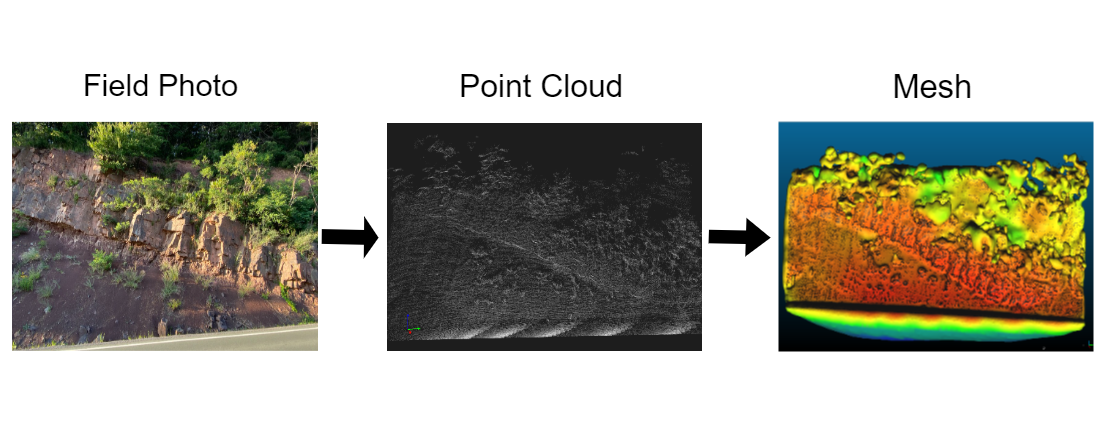
Exploration of the Host/Guest Activity of a Cationic Macrocycle
Jona P. Carmany1, Dr. Kevin L. Caran2, Dr. Ashleigh E. Baber2
- Department of Physics and Astronomy, James Madison University, Harrisonburg, VA 22807
- Department of Chemistry and Biochemistry, James Madison University, Harrisonburg, VA 22807
A one step synthesis is utilized to form cationic macrocycles, C24H24N4Cl4 and C24H24N4Br4. These cationic macrocycles have many applications within the medical field such as precise drug delivery and disease treatment. In particular, host-guest complexes of the cationic macrocycles have shown promise for a pH-controllable release model. Results obtained from the experiment showed a 3.55% yield for the cationic macrocycle using brominated materials, C24H24N4Br4. Host-guest complex formation was observed in NMR using a mixture of the brominated macrocycle and trisethanolamine ion. A Job’s plot of the host-guest complex was generated and showed a binding stoichiometry of 0.15:0.85 between calixpyridinium and trisethanolamine ion. A dilution series was performed to determine how much chemical shift was due to host-guest complex formation which showed a minimal shift to the left within the NMR spectra. Future work will include using atomic force microscopy to image the molecular packing structures of the cationic macrocycle host as well as the differences in morphology due to host/guest complex formation.
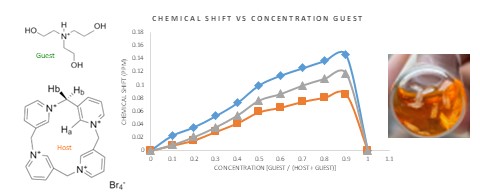
Comparison of the Amino Acid Metabolism of Genetically Different Yeasts
Amanda R. Cicali1, Eliana M. Diaz-Aceituno1, Dr. Steven Harper2, Dr. Samuel A. Morton2 and Dr. Christine A. Hughey1
- Department of Chemistry and Biochemistry, James Madison University, Harrisonburg, VA 22807
- Department of Engineering, James Madison University, Harrisonburg, VA 22807
The selection of malt, hops, and yeast affects the quality and flavor of the final beer. Here a pale ale was brewed with a 2-row Briess malt and Cascade hops. The wort was transferred to five fermentation tanks and fermented with the following genetically different yeast: Belgian Saison, California ale, Czech pilsner lager, English ale, and sake extreme fermentation. The aim of the work was to monitor amino acid metabolism during fermentation. Amino acids are extracted from the malt during mashing and utilized by the yeast to produce flavor compounds in Ehrlich biochemical pathways. Hydrophilic interaction liquid chromatography-mass spectrometry (HILIC-MS) was used to quantify sixteen amino acids throughout brewing. For each yeast, it can be shown that the amino acid concentration is highest halfway through mashing and decreases as fermentation progresses. However, it was also observed that the California ale consumed each amino acid at the fastest rate with the exception of proline. Sake extreme fermentation consumed each amino acid at the slowest rate with the exception of proline, serine, and valine. Future work will combine these observations with gas chromatography-mass spectrometry (GC-MS) data to determine the correlation between amino acid consumption and flavor production.
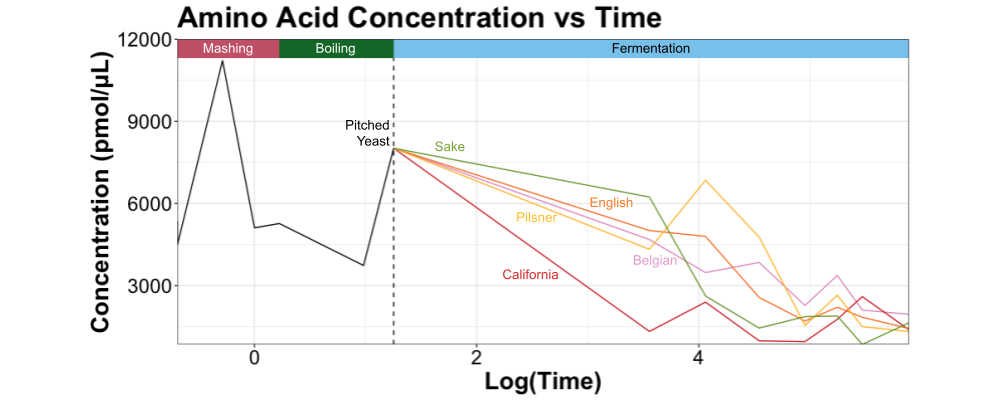
Effect of K+ on Amylase in β-Amylase 2
Mangelina Connor, Dr. Jonathan Monroe and Dr. Christopher Berndsen
Department of Chemistry and Biochemistry, James Madison University, Harrisonburg, VA 22807
How do plants feed themselves? In short, they do so by breaking down the polymeric carbohydrate, starch. Starch is broken down into smaller sugar molecules by Beta-Amylase plant enzymes. Beta-Amylases are a protein family gene composed of 9 variants all found in Eurasia in a weed plant known as Arabidopsis thaliana. B-amylases are crucial for degrading starch or carbohydrates to where it can be ingested by plants and ultimately help them get the necessary nutrients to grow. Unlike some of the other BAM variants, research on BAM2 has demonstrated that its structure is a tetrameter, it becomes active once it interacts with K+, and it shows sigmoidal kinetics. Starch is a starting product for many industries, most commonly in the baking industry as a thickening powder and in the cloth industry to get rid of wrinkles. In this project, the emphasis was placed on the Beta-Amylase 2 enzyme located in the Arabidopsis thaliana’s chloroplast. In this project, we assessed the effect of salts on BAM2 structure and activity to understand why it becomes active when interacting with K+. We purified protein from E coli and then used circular dichroism to measure the melting temperature. Data collected from circular dichroism showed that in E269N, the melting point for both Li and Na was 45°C and with K+, it was 40 °C. For BAM2 WT, the melting point was 45 °C with K+, but with Li and Na it had a melting point of 40 °C. Lastly, BAM5’s melting point for Li and Na was 50 °C, meanwhile with K+, it was at 55°C. Future directions include purifying and analyzing S464G and HED B-Amylase 2 mutations to compare the different mutation results.
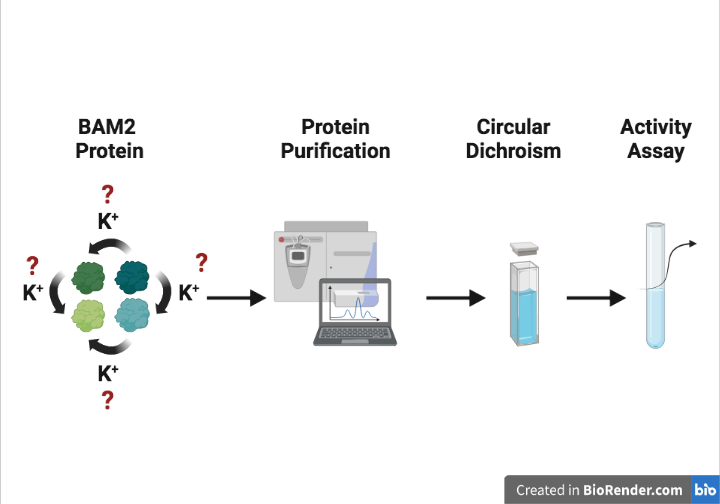
Development of Phage Therapies for Use in Treatment of Infectious Bovine Keratoconjunctivitis
Tobias Crooke1, Ria Fisher2, Clark Starkey1, Jordan Venning2
- Virginia Western Community College (VWCC)
- James Madison University (JMU)
Pink eye in cattle is has an important impact in the agricultural industry in Virginia and, of interest to us, in the Shenandoah Valley. While treatments and vaccines are available, the results are not consistent from year to year. Thus, an alternative method of treatment is needed. Bacteriophages (bacterial viruses) that kill bacteria but do not harm mammals are being developed primarily targeting antibiotic resistant infectious diseases. In this work, we are discovering or obtaining Moraxella bacterial species that are known to be the causative agents of pink eye. Sampling infected cow eyes has not yielded new Moraxella isolates to date, but we have been able to obtain isolates that are used in the region for vaccine development. We will use these bacterial hosts to find bacteriophages that are potentially lethal to the Moraxella organisms. Most of the work thus far has been developing reliable methods for bacterial growth and obtaining cow eye samples to look for both the bacteria and viruses. We will also collect from other environmental sources. This work is funded as a collaborative effort between JMU and VWCC by 4VA.
D
The Effect of Shelter Type, Soil Moisture, and Distance of the Trees to a Water Source on Riparian Restoration Tree Growth
Brandy Davidson, Christina Henriksen, Peter Manos, Samuel Ventura, and Dr. Bruce Wiggins
Department of Biology, James Madison University, Harrisonburg, VA 22807
Riparian zones are the area between freshwater sources, such as a stream, spring, lake, or river and the upland. Riparian restoration is important to better protect and preserve freshwater sources. In this study a combination of passive and active restoration were used. Passive involves removing the stress to the environment by fencing out livestock, and active involves planting seedlings in tree shelters to promote the seedlings surviving to adulthood. Unventilated and ventilated shelters were both used to determine if they would make a difference in the growth of the trees. Distance from water source was measured to determine if shelter type influenced soil moisture content at varying distances from both a steam, and a natural spring. Four species were planted: Platanus occidentalis, Liriodendron tulipifera, Amelanchier canandensi, and Asimina triloba. Field data included growth since spring, as well as soil moisture and distance to the ground water source. Data were analyzed in ArcGIS and SPSS statistical software. There was no effect of shelter type on growth of the different species. The distance to the ground water source for all trees proved to be statistically significant showing a positive relationship with a p-value of 0.002 and an R2 value of 0.064. However, the soil moisture was only statistically significant for Asimina triloba with a negative relationship and a p-value of 0.005 and an R2 value of 0.186. Although there was currently no difference in the growth based on shelter type, the growth could become significant with more time.
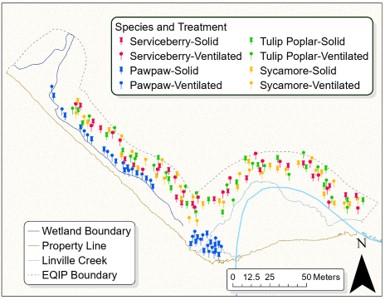
Brewing and Characterization of a Pale Ale Fermented with Five Genetically Different Yeasts
Eliana M. Diaz-Aceituno1, Amanda R. Cicali1, Dr. Steven Harper2, Dr. Samuel A. Morton2 and Dr. Christine A. Hughey1
- Department of Chemistry and Biochemistry, James Madison University, Harrisonburg, VA 22807
- Department of Engineering, James Madison University, Harrisonburg, VA 22807
Beer is a drink that can be considered a relic as humans have brewed it since 4,000 BCE. While technology affords greater control over the final product, the brewing process has remained relatively unchanged. Roasted barley is milled to facilitate the extraction of sugars and nitrogen compounds (e.g., amino acids) during mashing, where the barley is steeped in hot water. The resulting liquid, called wort, is boiled to sterilize it. Hop pellets are added to impart flavor, aroma and act as a natural preservative. The wort is then transferred to a fermentor where yeast is added and fermentation proceeds for ~10 days. Here a pale ale was brewed in the Madison Academic Brewery (MAB) with a Briess 2-row malt and Cascade hops in a SS Nanobrewtech 2-barrel brew system. The hops were added during the first and last 10 minutes of boiling. The wort was divided between five 7-gallon fermenters. Genetically different yeast were added to each and included WLP 001 California Ale, WLP 002 English Ale, Wyeast 4347 Extreme Fermentation, WLP 566 Belgian Saison, and WLP 800 Czech Pilsner Lager. Samples were collected throughout the entire brewing process and will be analyzed by hydrophilic interaction chromatography/ liquid chromatography mass spectrometry (HILIC LC/MS), reverse phase LC/MS and gas chromatography mass spectrometry (GC/MS) to monitor the evolution of nonvolatile and volatile compounds. The final beers were a pale, straw yellow with an average SRM of 5.4. The bitterness, measured by International Bitterness Units or IBUs, was within the 41-51 BU range. The alcohol by volume (ABV) ranged between 4.03% (Sake) and 5.52% (Belgian). The values are typical of an American pale ale.
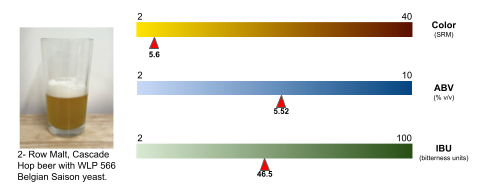
Stiffening PVA-BA gels by changing diboronic acid length
Xander Dirom and Dr. Gretchen Peters
Department of Chemistry and Biochemistry, James Madison University, Harrisonburg, VA 22807
Gels are versatile materials that have numerous practical applications such as environmental waste management, cosmetic items, drug delivery, and biomedical products. Because these applications require different material properties, there is an interest in developing gels that can be easily manipulated. In our previous work, we found that adding a diboronic acid crosslinker to a polyvinyl alcohol (PVA) – boric acid (BA) organogel yielded a tunable material. While BA alone formed viscous dispersions with PVA in DMSO, substituting small amounts of BA for 1,4-benzenediboronic acid (1,4-BDBA) dramatically improved the material properties and gelation. We theorized that by crosslinking PVA itself, 1,4-BDBA improved BA’s ability to form crosslinks and gel PVA. Here, we investigated the impact of the crosslinker’s length on BA crosslinking within PVA organogels. Specifically, we compared PVA gels formed with BA alone to those made with mixtures of BA and 1,4-BDBA or BA and 4,4ʹ-biphenyldiboronic acid (BPDBA). Notably, we found that the addition of BPDBA improved the properties of the PVA-BA gel in the similar fashion to 1,4-BDBA. However, these BPDBA/BA materials were significantly stiffer and more stable than those with BA and 1,4-BDBA or BA alone. That is 50:50 1,4-BDBA/BA mixtures have a G′ of 1476 Pa while 50:50 BPDBA/BA mixtures have a G′ of 2844 Pa. We theorize that this improvement with BPDBA is the result of longer length and its efficiency as a PVA crosslinker. Thus, PVA-BA organogels can be tuned by altering the ratio of crosslinkers or the length of the diboronic crosslinker.
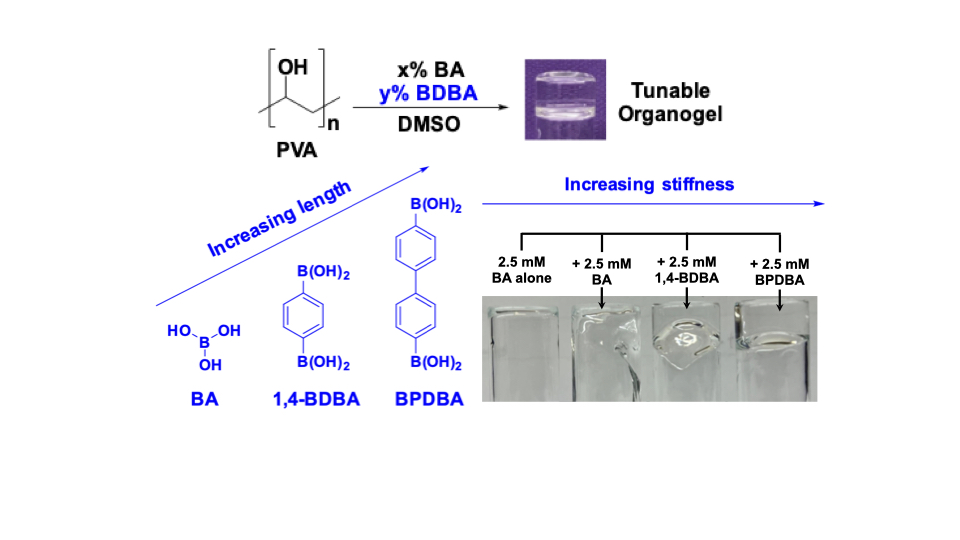
E
Impact of Plasticizer Structure in Chitosan Bioplastics
Logan Ealley Dr. Brycelyn Boardman and Dr. Gretchen Peters
Department of Chemistry and Biochemistry, James Madison University, Harrisonburg, VA 22807
Bioplastics are a promising solution to the growing plastic pollution crisis. Chitosan, a biopolymer derived from shrimp shells, readily forms plastic films that are biodegradable and have potential as food packaging. Because films formed with chitosan are very brittle, plasticizers, such as glycerol, are added to improve properties of the plastic, such as flexibility and durability. In our previous studies, we evaluated the molecular level interactions between glycerol and glucosamine, the repeat unit of chitosan and a useful model. In this work, we found that glycerol promotes intermolecular glucosamine-glucosamine interactions, while disrupting glucosamine’s intramolecular interactions. Additionally, we found that glycerol preferentially binds to the amine in both glucosamine and chitosan, suggesting that plasticization with glycerol requires a specific binding motif. Here, we explored how changing the structure and binding face of the plasticizer impacted the properties of chitosan films. To do this, we first crosslinked glycerol with boric acid to give borate esters 1,2-Glyc-BA and 1,3-Glyc-BA. We theorized that the formation of these complexes would allow us to change the binding face of glycerol and ultimately control its intermolecular interactions with chitosan. Interestingly, addition of boric acid to chitosan-glycerol plastics gave significantly less flexible films, indicating glycerol was no longer capable of binding and plasticizing chitosan effectively. Furthermore, we found that the order of mixing (i.e., pre-forming the borate esters versus combining all components prior to casting) influenced the material properties and the rate of dissolution in water. These findings emphasized the importance of glycerol’s binding motif for effective plasticization. Next, we investigated how lengthening the spacer between the OH’s of glycerol impacted the plasticization of chitosan. Specifically, chitosan films made with BT, HPD, or HBT (having an additional carbon at C1, C2, or both C1 and C2) were evaluated and compared to glycerol films. We found that films made with these polyols were still flexible, with chitosan-BT films being the least brittle. Significant shifts were observed in the IR spectrum of chitosan when the polyols were added. Notably, signals for the CN/NH combination band and CO-H bend shift toward higher wavenumber, indicating the system is more ordered and there is an increase in hydrogen bonding. The largest of these shifts occurs in the presence of BT, which suggests the 1,2-diol unit is a key structural unit for chitosan plasticization. In the future, we will further exploit the binding face of glycerol-based polyols and optimize the structure of chitosan plasticizers.
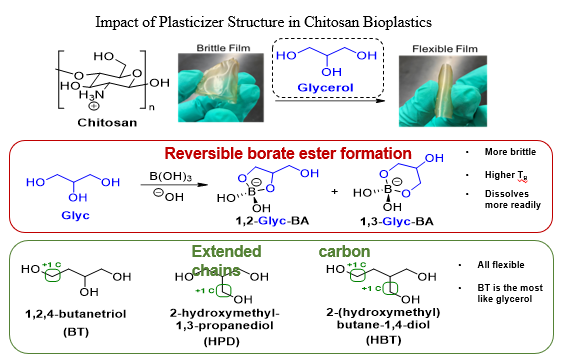
G
Effect of Thermal Annealing on WSe2 Adsorption Sites
Ava J. Galgano1, Erin D. Schell1, Haley E. Frankovich1, Jona P. Carmany1, Charles L. Grant1, John K. Yoo1, Jacob L. St. Martin2, Petra Reinke2, Ashleigh E. Baber1
- Department of Chemistry and Biochemistry, James Madison University, Harrisonburg, VA 22807
- Department of Materials Science and Engineering, University of Virginia
Transition metal dichalcogenides (TMD) are two dimensional (2D) materials gaining attention due to their unique properties at low dimensions. 2D TMDs have shown promise as catalysts for CO2 hydrogenation and the hydrogen evolution reaction. Defects, or surface irregularities, of the atomic structure of 2D TMDs, are suggested active sites; however, the link between defects, electronic structure, and activity is unknown, which limits the ability to control reactivity. Prior to investigating the chemical reactivity of the 2D TMD, WSe2, layers of the material were transferred from a bulk sample to a tantalum substrate via mechanical exfoliation. The WSe2/Ta was gently annealed under ultrahigh vacuum (UHV) conditions at varying temperatures and times to increase the defect inventory. The results shown here will highlight the reactivity of methanol as a probe molecule using UHV temperature programmed desorption on WSe2/Ta. In addition, optical and atomic force microscopy characterization will be used study surface defects. After annealing to 400 ºC for 30 min, the appearance of a new desorption feature for methanol was observed indicating a change of surface defect concentration. The combination of this data will lead to a better understanding of the correlation between the structure of materials and the molecular adsorption (sticking) and desorption (releasing). Future work will study the change in defect inventory by ion bombardment in comparison to the annealing procedure.
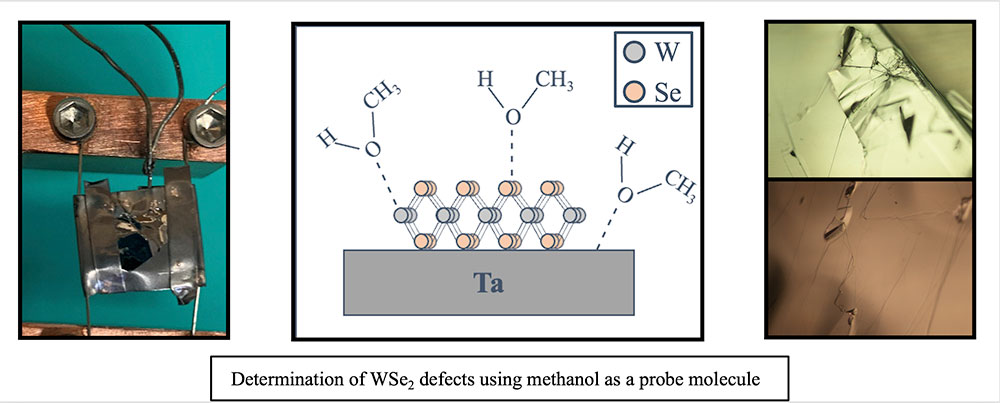
Improving the Accuracy of Joint Density Functional Theory (JDFT) Solvation Energetics
Harrison Gardner, Dr. Kendra Letchworth-Weaver
Department of Physics, James Madison University, Harrisonburg, VA 22807
Density Functional Theory (DFT) is a powerful tool for modeling the electronic properties of molecules, solids, and surfaces, however most software implementations lack an accurate model for solute systems in a liquid environment. Joint Density Functional Theory (JDFT) models molecules and surfaces in liquid with an optimal balance of accuracy and efficiency and is implemented within the open source code (JDFTx). JDFT combines quantum mechanics to describe the solute with a continuum model to describe the solvent. Here we describe a new parameterization of the van der Waal interactions used to couple the solute and the solvent which significantly improves the agreement between the theoretically predicted and experimentally measured solvation energies in three different solvents. Our model is then pitted against a large amount of experimental data to test accuracy and precision.
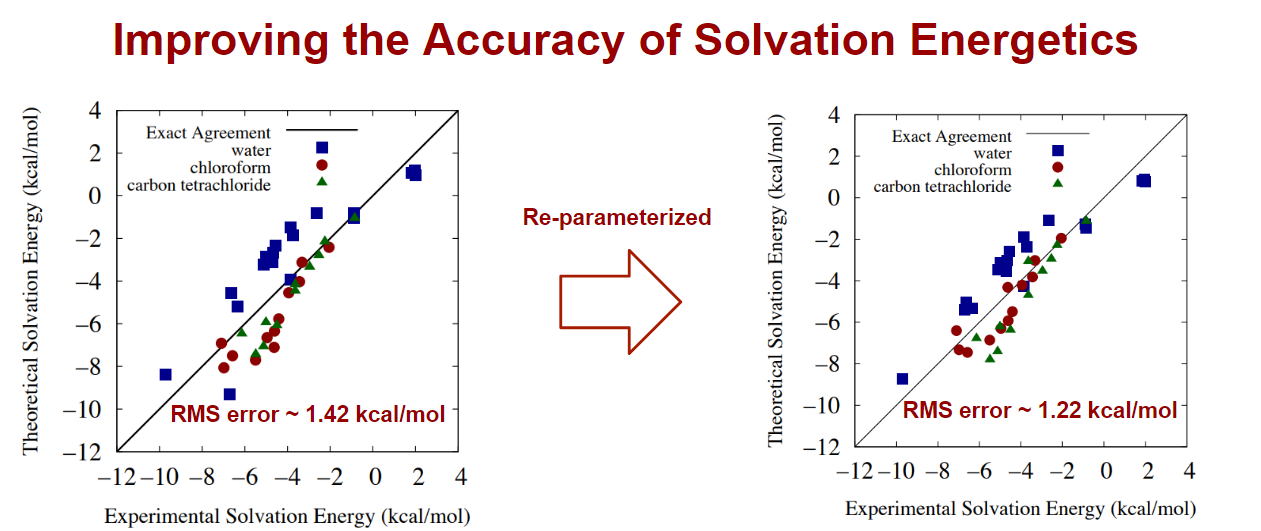
Design and Synthesis of Monomers for an Artificial Muscle System
Taylor Gentry and Dr. Chris Hollinsed
Department of Chemistry and Biochemistry, James Madison University, Harrisonburg, VA 22807
This work involves the design and synthesis of monomers for an artificial muscle system. It is believed that the attraction of opposite charges within the same molecule will result in significant geometric shortening of intramolecular distances. Characterization of the system and its predicted contractile behavior using computational chemistry, measuring the contractile force using atomic force microscopy (AFM) based spectroscopy and submitting the starting ammonium compound and the oxidized-contracted material for single X-ray crystal analysis will be carried out. Ab initio calculations for both the ammonium form and the oxidized form have been completed. Laboratory synthesis of the desired monomer are in progress. Design and synthesis of a suitable monomer analog that can be used for the AFM experiments is underway.
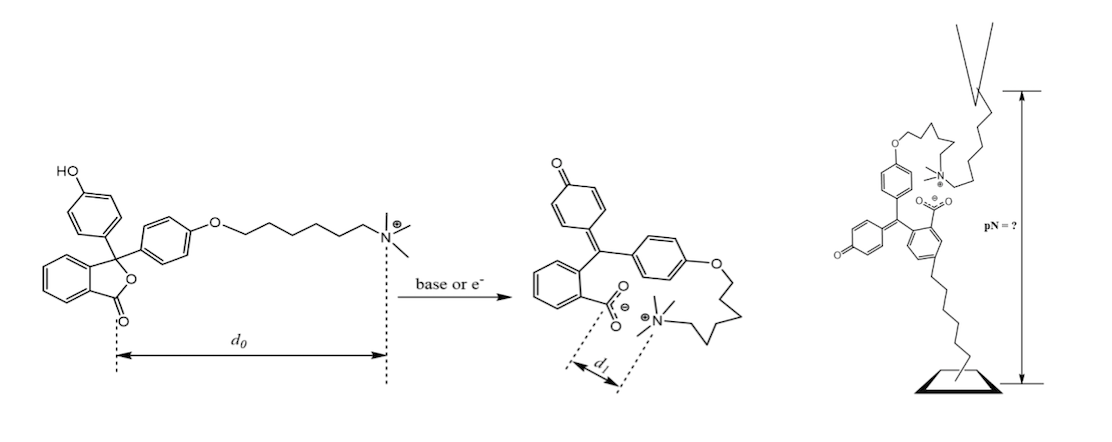
Pre-/Post-Liming Water Chemistry of the St. Mary’s River
Shyleigh A. Good and Daniel M. Downey
Department of Chemistry and Biochemistry, James Madison University, Harrisonburg, VA 22807
St. Mary’s Wilderness is a federally designated portion of the George Washington National Forest in Augusta Co, VA. The 10,000 acre Wilderness is drained by the St. Mary’s River and five major tributaries, including Sugartree Branch, Mine Bank Creek, Bear Branch, Chimney Branch, and Hogback Creek. The river and its tributaries experienced loss of aquatic life in the late 1990s due to acid rain. In 1999, 2005, 2013 and March 2022, limestone was introduced into all of the streams in the Wilderness to neutralize acidity. Dosage was 200 tons evenly distributed to 7 sites. Water samples were collected weekly from January to June at one site at the Wilderness boundary. Additional samples were taken in a single time frame throughout the Wilderness upstream and downstream of the liming site. Analytical data for these samples have been used to judge the initial effectiveness of the limestone treatment and estimate longevity. Key water chemistry parameters for the weekly samples showed average increase in pH from pH 5.87 to pH 6.49, increase in ANC from 9.6 to 45.4 µeq/L, increase in Ca / H ratio from 25.7 to 184.6, and decrease in Al from 13 to 7 ppb. The upstream and downstream data pairs for each liming site also show increases in water quality. Longevity estimates indicate the Wilderness will not need another limestone treatment for at least 7 years. Due to the Clean Air Act and improved rainfall water quality, it is possible that no future treatment may be needed.
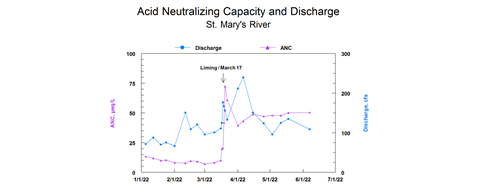
Reactivity of Primary and Secondary Butanol Isomers on TiO2/Au(111)
Charles L. Grant, Haley E. Frankovich, Lyssa A. Garber, Ava J. Galgano, Clayton J. Rogers, John K. Yoo, Erin D. Schell, Jona P. Carmany, Dr. Ashleigh E. Baber
Department of Chemistry and Biochemistry, James Madison University, Harrisonburg, VA 22807
Biofuels can be used to reduce global dependence on fossil fuels while contributing to a carbon neutral cycle. Biobutanol has low volatility and multiple transportation options which make it an attractive alternative fuel. Understanding the fundamental thermal catalysis processes of butanol over heterogeneous model catalysts can aid in the design of more efficient catalysts. Butanol isomers give rise to products including isobutyraldehyde, 2-butanone, butyraldehyde, isobutene, and butene, all of which have applications ranging from gasoline additives to bioplastics. For the partial oxidation of butanol isomers, TiO2/Au(111) inverse model catalysts are promising due to their ability to catalyze redox reactions of C1 – C3 alcohols. Titania coverage effects were not reported for methanol or 2-propanol, but lower TiO2 coverages in the presence of excess oxygen enhance selectivity of the partial oxidation of ethanol. To better understand how butanol breaks down in heterogeneous catalytic processes, temperature programmed desorption (TPD) is used to investigate its reaction. In this study, the reactivity of butanol isomers, specifically 1-butanol, 2-butanol, and isobutanol, on TiO2/Au(111) was investigated. TPD was used to detect products and atomic force microscopy (AFM) highlighted the morphology of the surface. At low coverages of TiO2, only 2-butanol showed expected oxidation reactivity, while the primary alcohols, 1-BuOH and isobutanol, exhibited low reactivity and formed reduced products. At higher coverages of TiO2/Au(111), all butanol isomers formed both oxidized and reduced products. The selectivity of the reaction was not altered during successive desorption experiments, indicating that the model catalyst was stable without reoxidation between experiments. AFM images show that the Au(111) crystal has a ~0.13 ML and 0.25 ML of TiO2 with predominantly 1D wire-like nanoparticles. Higher coverages of TiO2 result in more particles distributed across the surface indicating that the reactivity was influenced by butanol proximity to TiO2 nanoparticle rather than differences in size or shape.
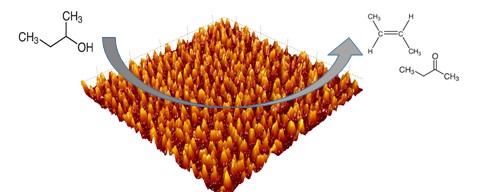
Spectrometric analysis and Bioassay of 3-((1-methylpyrrolidin-2-yl) methoxy) pyridin-1-ium
Jonathan Gutierrez1 and Dr. Adebowale Ogunjirin2
- Department of Chemistry and Biochemistry, James Madison University, Harrisonburg, VA 22807
- School of Science, Technology, Accessibility, Mathematics and Public Health, Gallaudet University, Washington, DC 20002
We desire a rapid, inexpensive, in-house bioassay to test synthesized compounds' toxicity to zoological systems. A method utilizing brine shrimp (Artemia salina Leach) was proposed as a simple bioassay for quick toxicological profiling of synthetic nicotine-like compounds. Synthesized nicotine-like compounds were analyzed spectrometrically to confirm their identity before being used for bioassay. The procedure tries to determine LC50 values in weight/ml of nicotine and synthesized compounds in the brine medium. The bioassay concluded that weight for weight nicotine and the synthesized compound 3-((1-methylpyrrolidin-2-yl) methoxy) pyridin-1-ium) are relatively nontoxic to brine shrimp cell up to about 5 mg/ml concentration when brine shrimp are exposed to the compounds for 12 hours. More work needs to be done to confirm if this tool will serve as a convenient in-house general bioassay tool for the toxicity of synthesized nicotine-like compounds.
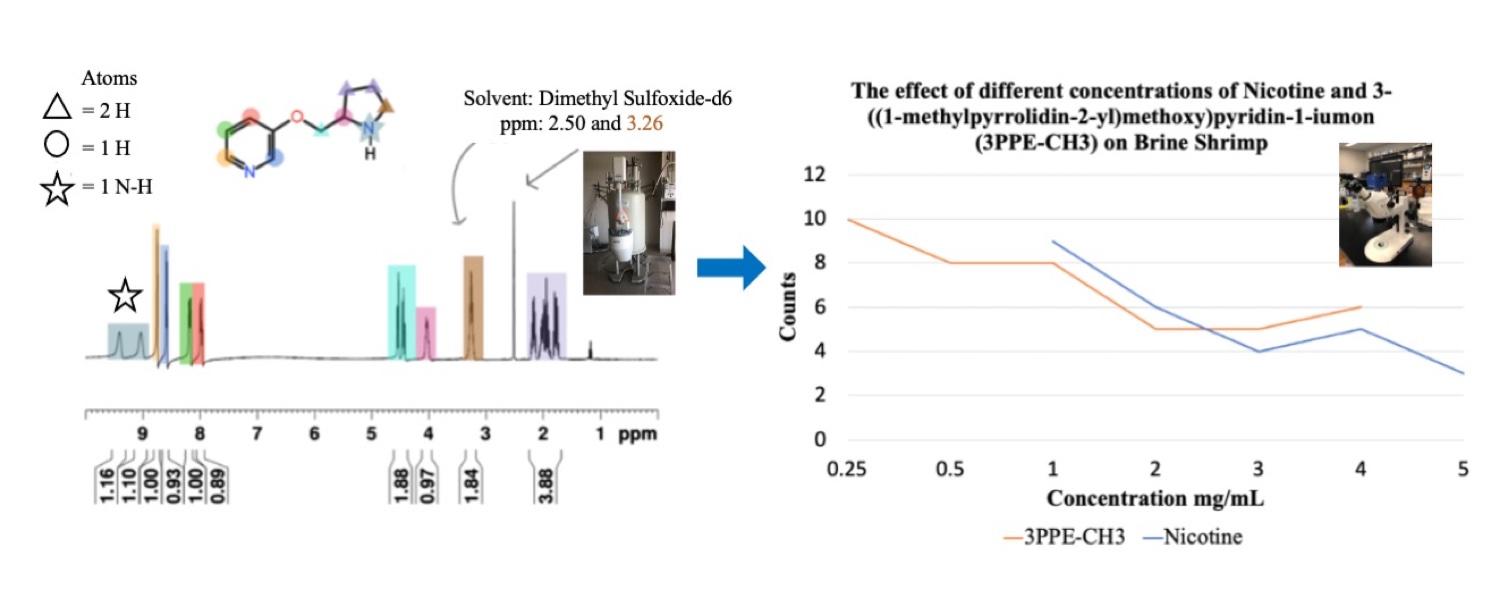
H
Investigating Obscurin’s Modulation Through the RhoA Pathway
Quinn Harkrider1, Micah Yoder2 and Dr. Nathan T. Wright1
- Department of Chemistry and Biochemistry, James Madison University, Harrisonburg, VA 22807
- Department of Chemistry and Physics, Mansfield University
Obscurin is a large cytoskeletal protein found in epithelial and muscle cells. It is the second most mutated protein in breast and colorectal cancers and is significantly downregulated in pancreatic cancer. Obscurin activates ROCK via RhoA, which in turn activates myosin, stimulates F-actin polymerization, and modulates cellular motility and migration. Likewise, obscurin knockdown leads to an epithelial to mesenchymal transition (EMT), a hallmark of cancer progression. Obscurin is not known to be modulated in any way by any part of this downstream RhoA pathway, yet it seems likely that a cytoskeletal protein would be affected by cell motility and motion. Here we begin to describe the relationship between global obscurin structure and individual components of this downstream pathway, including cell architecture and cell motility. We show that our model system, MDCK cells, express either no or very little obscurin. Upon the introduction of mini-obscurin constructs containing a precalibrated FRET-based force sensor, we see that obscurin localizes around the cell membrane in a dose-dependent manner. In normal cells, all obscurin constructs under >5 pN of force. When either the actin or myosin cytoskeleton is disrupted, the cells show a characteristic round morphology and obscurin is under significantly less force. However, when ROCK is inhibited, obscurin tension remains unchanged yet cells show morphological differences. This suggests that obscurin tension is not directly modulated by the pathway which it controls. Instead some other external force, possibly physical or specifically directed at the actin/myosin cell architecture, modulates obscurin tension and thus influences global obscurin architecture. Experiments are underway to disambiguate this stimulus.
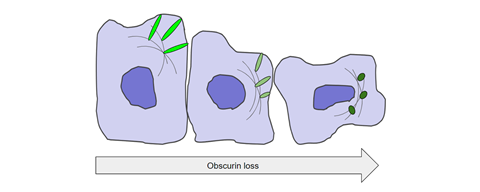
Characterization of Student Practices in Planning Experiments in General Chemistry Labs
Lyn Haugh and Dr. Oscar Judd
Department of Chemistry and Biochemistry, James Madison University, Harrisonburg, VA 22807
The K-12 Framework for Science Education1 includes scientific and engineering practices, encompassing the work students do in their labs in terms of performing scientific activities. We are using this Framework to characterize how non-chemistry major students engage in the practice of planning and carrying out scientific investigations when they complete individual planning documents for a calorimetry experiment in the general chemistry lab. Using these documents, we sought to identify trends between individual characteristics of student work and their success in engaging with scientific practices. Using classifying techniques referred to as open coding, we described students’ work into categories under every unique characteristic we found, leading to a vast array of codes. We then coded students’ work into categories that explained how students were formatting their planning documents in an attempt to determine if format was an important factor in students’ quality of work. Ultimately, we identified themes based upon students’ anticipated final results and setting of controls as the most definite characteristics that indicate how successfully students engaged in the practice of planning scientific investigations when completing their planning documents.
- National Research Council. A Framework for K-12 Science Education: Practices, Crosscutting Concepts, and Core Ideas; Helen, Q., Heidi, S., Thomas, K., Series Eds.; The National Academies Press: Washington, DC, 2012.

3D Modeling of The Cabachuelas Natural Reserve Cave System Using LiDAR Technology and ArcGIS Pro
Hannah Hitchcock1, 2, Angel A. Acosta-Colon3
- Department of Geology and Environmental Science, James Madison University, Harrisonburg, VA 22807 Department of Earth and Atmospheric Sciences, Saint Louis University
- Department of Physics and Chemistry, University of Puerto Rico at Arecibo
The northwest region of Puerto Rico is defined by karst terrain resulting from dissolution of the underlying Lares Limestone Formation, a pure fossiliferous limestone deposited during the Oligocene. Understanding the geology and geologic mechanisms of this area has become increasingly important for both environmental and economic factors including cave tourism and research. The Cabachuelas Natural Reserve Cave System, a 4 km² area containing at least 65 known caves in Morovis, Puerto Rico, went under government protection in 2012 and is an increasingly popular tourist attraction, creating a greater need for increased safety measures and accurate maps and models. This study is a continuation of the Geometrical Characterization of the Cabachuelas Natural Reserve Cave Systems conducted by Angel A. Acosta-Colon by creating a fully comprehensive 3D model of both the surface elevation data and subsurface cave data. Cave point clouds were previously created using GeoSLAM LiDAR technology and were cleaned and converted into water-tight solids using a MeshLab algorithm. Each cave was imported into ArcGIS Pro as an Alias Wavefront Object using the Import 3D File tool and was manually positioned using the Edit features. The topographic data was obtained through NOAA Open Access Viewer Elevation LiDAR data and added to the 3D scene. This method could be made more efficient by adapting the original cave point clouds to include control point coordinates allowing for the 3D files to be imported directly into position. This model will aid in more efficient rescue efforts, increase accessibility to natural attractions, and open new possibilities in research.
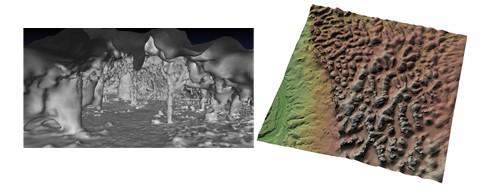
Examining Big Tau’s Ability to Protect against DNA Double Strand Breaks
Nicole Hughes, Julia Merrel and Dr. Terrie Rife.
Department of Biology, James Madison University, Harrisonburg, VA 22807
Six low molecular weight isoforms of tau are found in the central nervous system (CNS). These isoforms are highly studied because of their tendency to misfold into neurofibrillary tangles (NFTs) in Alzheimer’s Disease. Big tau is a high molecular weight tau isoform found in the peripheral nervous system (PNS) that has been overlooked in the literature since it does not misfold into NFTs. The PNS neurons are less protected and more stressed than CNS neurons, which suggests that big tau will need to function more robustly than the smaller isoforms to protect DNA from double strand breaks (DSBs). This study aims to determine if big tau functions more effectively than low molecular weight isoforms to protect DNA from DSBs. To test this, several cell lines of big tau and total tau knockouts were made in SK-N-MC cells using CRISPR-Cas9 gene editing. Cell lines were treated with H2O2 to induce DSBs and comet assays were performed to quantitate DSBs. On average, before treatment cells had tails of about 20 +/- 10% DNA. Treatment of the wild type cells with H2O2 increased the tail DNA to 54 +/- 18%. Total tau knockout lines had tail DNA of 68.8 +/- 25.6 % and 59.69 +/- 25.3 %. Big tau knockouts had tail DNA of 60.2 % +/- 29.8% and 41. 0 +/- 21 %. Oliv moments of the lines were also used for data analysis. Taken together, this data indicates that total tau knockout increases DSBs compared to WT cells but big tau knockouts do not consistently increase DSBs compared to WT cells.
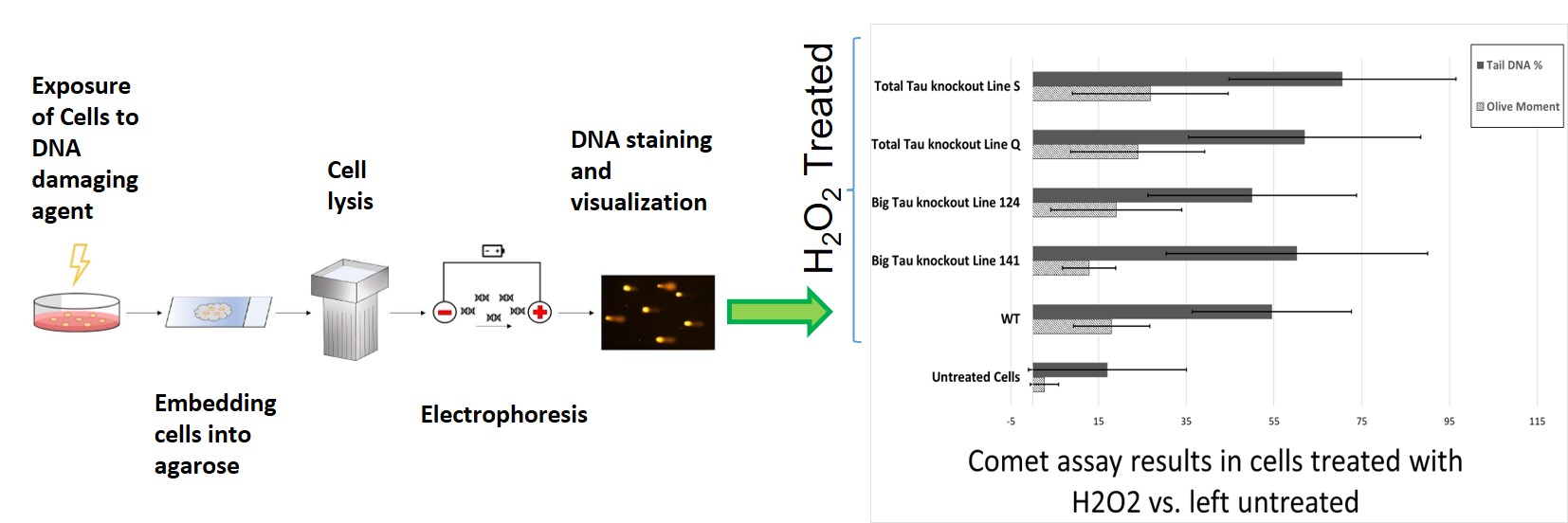
J
Effects of Heterotrophic Bacteria From a Local Retention Pond on the Growth of the Toxic Cyanobacterium Microcystis aeruginosa
Tiffanie James, Rebecca Falkenstein, Louie Wurch
Department of Biological Sciences, James Madison University, Harrisonburg, VA 22807
Responsible for most of the world’s oxygen production, species of photosynthetic cyanobacteria and algae are keystone organisms in aquatic ecology. However, under favorable growth conditions, certain species can form blooms that suffocate aquatic life or, more perniciously, expel harmful compounds that are toxic to other organisms. Mitigating these “harmful algal blooms” (HABs) is difficult because it requires detailed knowledge of all the factors leading to bloom conditions. Previous efforts have focused on abiotic drivers of HABs, such as temperature or nutrient influx. Far less is known about the potential role of bacterioplankton in HAB formation, persistence, and decline, but new research alludes to the importance of these organisms interacting in the phycosphere. Microcystis aeruginosa is a species of cyanobacteria that has become a model system for studying toxic, high-biomass HABS. M. aeruginosa forms toxic blooms on every continent except Antarctica, and summer blooms even occur in the retention pond at James Madison University, providing a convenient field sampling location for studying drivers of these blooms. In this study, 18 different strains of bacteria were isolated from the retention pond at JMU. A high-throughput plate reader assay was developed to track the effect of 14 of these bacteria isolates on the growth of M. aeruginosa. Preliminary results suggest that two strains have positive effects, most strains have no effect, and two strains may be antagonistic. These data are critical for teasing apart normal bacterioplankton community members from those that have an effect on cyanobacterial HAB formation.
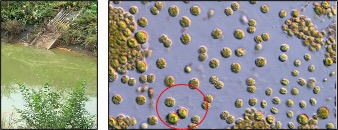
The effect of environmental factors on the community structure of the freshwater zooplankton of Belle Isle’s rock pools
Thomas M. Jones, Vanessa Rollins, Charles Stunkle, Andrew Davidson, Joshua Armstrong, James Vonesh, Karen Barnard-Kubow
Freshwater zooplankton consist of hundreds of species, from dozens of genera and families. They provide an essential aspect of freshwater communities, serving as both predator and prey for a variety of organisms, both larger and smaller than themselves. This work focuses on characterising the freshwater zooplankton communities in the rock pools of Belle Isle in the James River in Richmond, Virginia and seeks to provide a better understanding of the factors that contribute to this community structure. In order to understand the nature of these zooplankton communities, there must first be an accurate measure of the distribution of these taxa in the rock pools. We achieved this by first taxonomically identifying individuals in samples from pool water, then double checking the identification through barcoding. Eventually, the hope is to be able to metabarcode whole samples at a time, thereby significantly increasing the speed and accuracy with which communities can be identified and studied. Finally, we took these counts and compared them with data gathered by the VCU Geology department on various factors such as the flooding regime, temperature of the pools, depth of the pools, and shaded areas of the pools, and used R to determine if, and by how much, these factors influence the zooplankton of Belle Isle’s rock pools. Thus far, results indicate that among the factors being investigated, temperature has the greatest impact on the structuring of zooplankton communities.
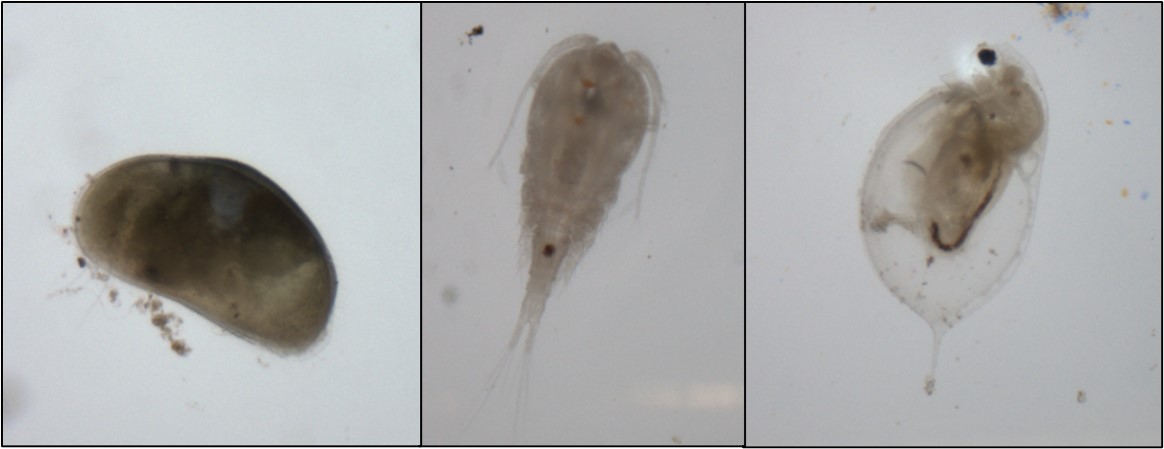
Structural changes in the gastric wall in response to sodium benzoate intake in mice.
Ann R. Joshy, Lydia A. Carl and Bisi T. Velayudhan
Department of Biology, James Madison University, Harrisonburg, VA 22807
Dietary ingredients influence the structural and functional adaptations in the gut. Sodium benzoate (SB), a widely used preservative in beverages and acidic foods, is generally regarded as safe at 0.1% by weight. Overuse of SB in food products have been reported and individuals are likely to consume more than one food product per day with the same preservative. We hypothesized that long-term consumption of SB in a higher amount than prescribed would impair the structural and functional composition of stomach wall. The specific aims were to determine whether SB intake would alter the thickness of stomach mucosa, muscularis externa, and change the proportion of different cell types in the stomach mucosa. C57BL/6 female mice after weaning were fed with or without 1% SB by weight of standard rodent chow and stomach samples were collected for histological evaluation at the end of six months of feeding. Statistical analyses of data were conducted using the generalized linear model analysis in R program. We observed a decrease in the muscularis externa thickness and the amount of surface mucous lining along with hyperplasia of ducts of submucosal mucous glands in SB-treated mice compared to the controls. There was no difference in the mucosal thickness or the proportion of parietal cells between the treatment groups. Our results suggest that daily intake of SB at a higher dose for a longer period may induce structural changes in the stomach wall leading to compromises in function, such as motility and mucosal integrity.
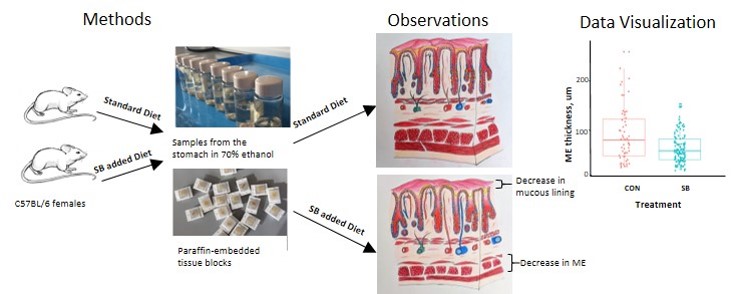
Probabilistic Analysis of Entropy Stabilized Oxides using DFT and Machine Learning
Lily Jade Joyce, Kristen E. Johnson, Dr. Christina Rost, and Dr. Kendra Letchworth-Weaver
Department of Physics and Astronomy, James Madison University, Harrisonburg, VA 22807
Entropy Stabilized Oxides (ESOs) are a novel class of materials which are enthalpically unfavorable, but entropically favorable due to high configurational disorder. Though not able to directly predict formation energies of ESOs, enthalpy based methods such as Density Functional Theory (DFT) remain useful for gathering bond length data, oxidation states, and other statistics from the microstates representing the local environments of these materials. These statistics are useful for comparison to experimental methods such as XAS, provided that the microstates are representative of the real material. For systems large enough to be representative of the material, DFT can be quite computationally expensive, so instead we have been utilizing Machine Learning (ML) algorithms to identify structural and energetic descriptors based on DFT. We aim to use these ML algorithms to scan through potential ESO candidates and predict which ones will be the best for more in-depth study using the more accurate but computationally expensive DFT.
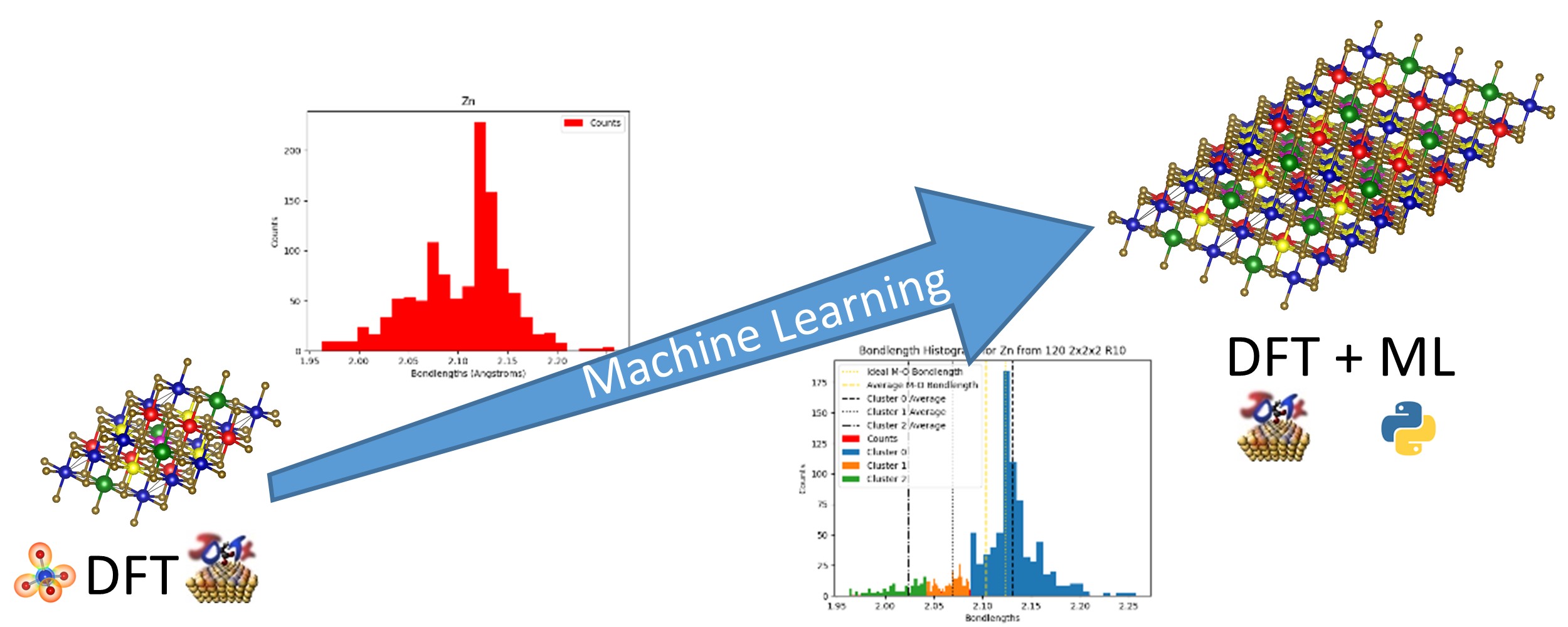
K
Analysis of the Structure and Behavior of Maltodextrin in Solution
Angela Kayll1, Jonathan Monroe2, Michal Hammel3, Gregory L. Hura3, Christopher E. Berndsen1
- Department of Chemistry and Biochemistry, James Madison University, Harrisonburg, VA 22807
- Department of Biology, James Madison University, Harrisonburg, VA 22807
- Lawrence Berkeley National Laboratory, Berkeley, CA 94720
Starch, a large polymer of glucose, is a form of long-term energy storage in plants. Starch is one of the most widely used molecules by humans; it can be used for papermaking, laundry, thickeners, the removal of toxic metals, plastics, and more. Animals, including humans, also use starch as a source of nutritional energy within the body. The ability for a plant to store energy as starch allows for carbohydrate regulation through periodic degradation. Beta amylases, or BAMs, are protein enzymes that degrade starch in plants. While more information about the general structure and function of BAM proteins has now largely been defined, their specific function is yet to be fully discovered and understood. BAM2, a variant of the BAM protein, is a catalytically active protein in the presence of K+. Its unique tetrameric structure and cooperative kinetics revealing negligible activity at low concentrations of starch is unusual for a BAM protein, and it suggests that BAM2 might have an unusual role or unique function in plants. While a tetrameric structure has been built of the BAM2 protein, the structure has only been described in the solid or semi-crystalline state. There is currently no known information about the starch-bound form of BAM2 or any other BAM proteins, which leads to questions concerning how BAM proteins cleave starch. Our project aims to describe the structure of the carbohydrate substrate of BAM2. Knowing information about the structure of our substrate can lead to information about the functionality of BAM2, thus allowing us to further understand the uses of BAMs in humans and plants. The initial results from our SAXS datasets revealed impurities in our samples, which led us to purify maltodextrin samples by ethanol precipitation and column purification using a Sephacryl S-100 16/60 column. We measured the concentration of carbohydrate samples that obtained different purification methods using a Bicinchoninic Assay (BCA Assay). After determining the concentration of our sample, we used Dynamic Light Scattering (DLS) to assess the size and homogeneity of the maltodextrin samples. We also used Size Exclusion Chromatography Small Angle X-Ray Scattering (SEC-SAXS) and High-Throughput Small Angle X-Ray Scattering (HT-SAXS) to view the structure of maltodextrin chains in solution. We determined that column purification purified the maltodextrin samples with a dextrose equivalent of 16.5-19.5 and led to clearer SAXS results. However, using ethanol precipitation and column purification in conjunction reduced the concentration of our sample below viable detection limits. We attempted to increase the concentration of our samples by ethanol precipitation of a supersaturated solution, then analyzed the results using BCA Assays and DLS. Using the SAXS data collected, we hope to create predicted models to analyze the structure of maltodextrin chains, therefore allowing us to observe what happens when the BAM2 protein comes into contact with its substrate. We also aim to repeat this experiment with a variety of solvents in the Hofmeister series to determine if there are any cationic or anionic effects on maltodextrin structure.
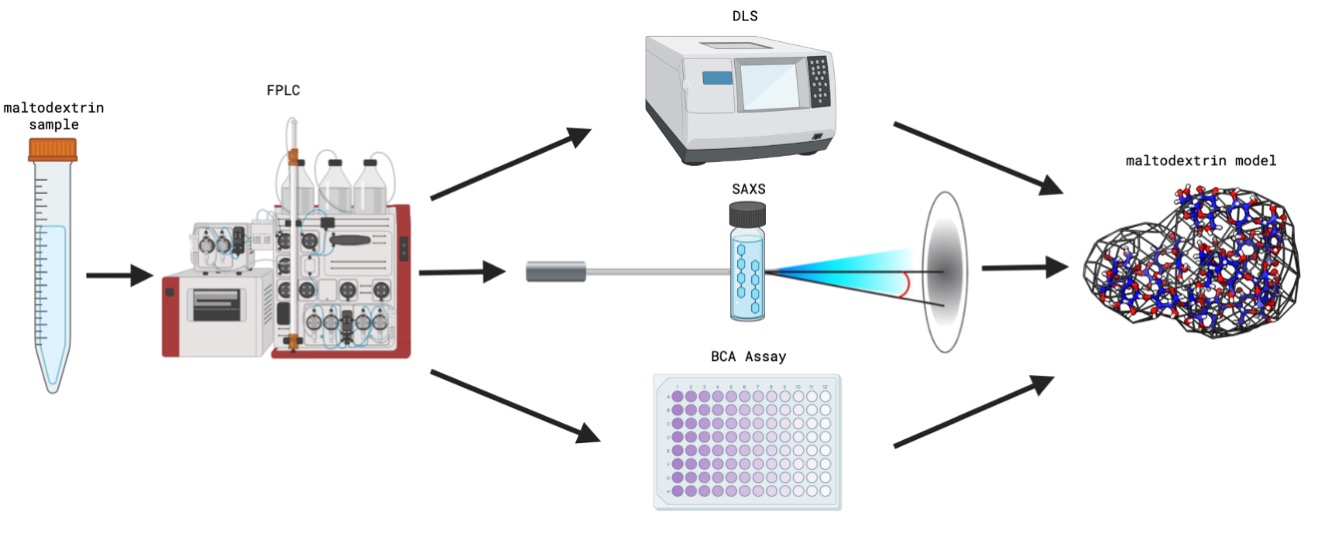
Characterizing the expression Sphingosine 1-phosphate receptors in the early stages of osteogenic differentiation
Tara King, Nica Omandan, Laila Robinson and Jaira Ferreira de Vasconcellos
Department of Biology, James Madison University
Fibrosis is an aberrant healing response to injury and is characterized as a non-functional tissue type. Recently, severe fibrosis after traumatic musculoskeletal injury has been identified as a precursor to the development of ectopic bone and is considered an early manifestation of the disease. Sphingosine 1-phosphate (S1P), a metabolic product of cell membrane sphingolipids, binds to G protein-coupled S1P receptors (S1PR) to regulate embryonic development and disease, including kidney, liver and lung fibrosis. This research investigated the expression of S1P receptors during the early stages of osteogenic differentiation. To investigate this, we measured the expression levels of human S1P receptors (S1PR1, S1PR2, S1PR3 and S1PR5) in bone marrow mesenchymal stem cells in growth media (GM) and osteogenic media (OM) over a period of seven days. RNA was harvested and extracted on days 0, 3, 5 and 7 followed by cDNA reverse transcription and qRT-PCR analysis. S1PR1 expression levels were unchanged on day 3, down-regulated on day 5 and slightly up-regulated on day 7 in OM compared to GM (control) samples. S1PR2 was down-regulated on days 3 and 7, and unchanged on day 5 in OM compared to GM samples. S1PR3 was consistently up-regulated on days 3, 5 and 7 in OM compared to GM samples. Finally, S1PR5 was down-regulated on day 3 and up-regulated on days 5 and 7 in OM compared to GM samples. Altogether, these results show a differential modulation on the expression levels of S1P receptors in the early stages of osteogenic differentiation.
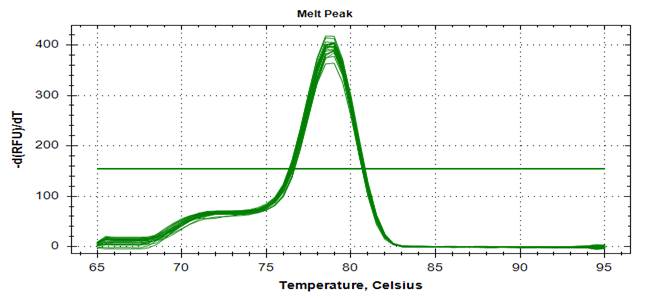
Electromagnetic Waves Effect on C.elegans
Alexander Kline, Issac Spicher, Addison Shenk, Dr. Kirstopher Schmidt, Dr. Timothy Bloss, Dr. Giovanna Scarel
- Department of Chemistry and Biochemistry, James Madison University, Harrisonburg, VA 22807
- Department of Biology, Eastern Menonite University, Harrisonburg, VA 22802
It is known that C.elegans worms increase their speed when they are exposed to blue light. We hypothesize that also radio waves have an effect on the speed of the C.elegans. To test this hypothesis we are exposing the worms to white light, 28.6 mW blue light (450 nm), 2.88 nW radio waves (100 MHz), and 28.6 mW blue light plus 2.88 nW radio waves (100 MHz). After these experiments we will expose the worms to blue light at varying power (from 2.15 mW to 28.6 mW) with and without radio waves to fully confirm our hypothesis. Finding radio waves tcan activate biological receptors can have important consequences in medicine because radio waves can become a substitute for blue light with Alzheimer patients making the procedures less intrusive.
L
13C and 1H NMR Studies of Combined Anion Effects on Caffeine Aggregation
Luke A. Langbo, Yanjie Zhang
The Hofmeister series ranks ions’ relative ability to influence various processes in aqueous solution such as protein solubility, protein folding, and polymer aggregation. This study aims to investigate the effects of combined anions from the Hofmeister series on caffeine aggregation using 13C and 1H NMR and dynamic light scattering (DLS). The studies involving DLS determined that this analysis method was ineffective at monitoring the size of caffeine aggregates in solution. Therefore, we will focus on the NMR studies in current presentation. The chemical shift of caffeine in the presence of Na2SO4, NaSCN, NaBr, NaClO4 and combinations of two of these salts are measured and compared to the chemical shift of caffeine in a salt-free solution. We are in the process of drawing conclusions from the data collected in the past a few weeks. More conclusive results will be presented at the final symposium.
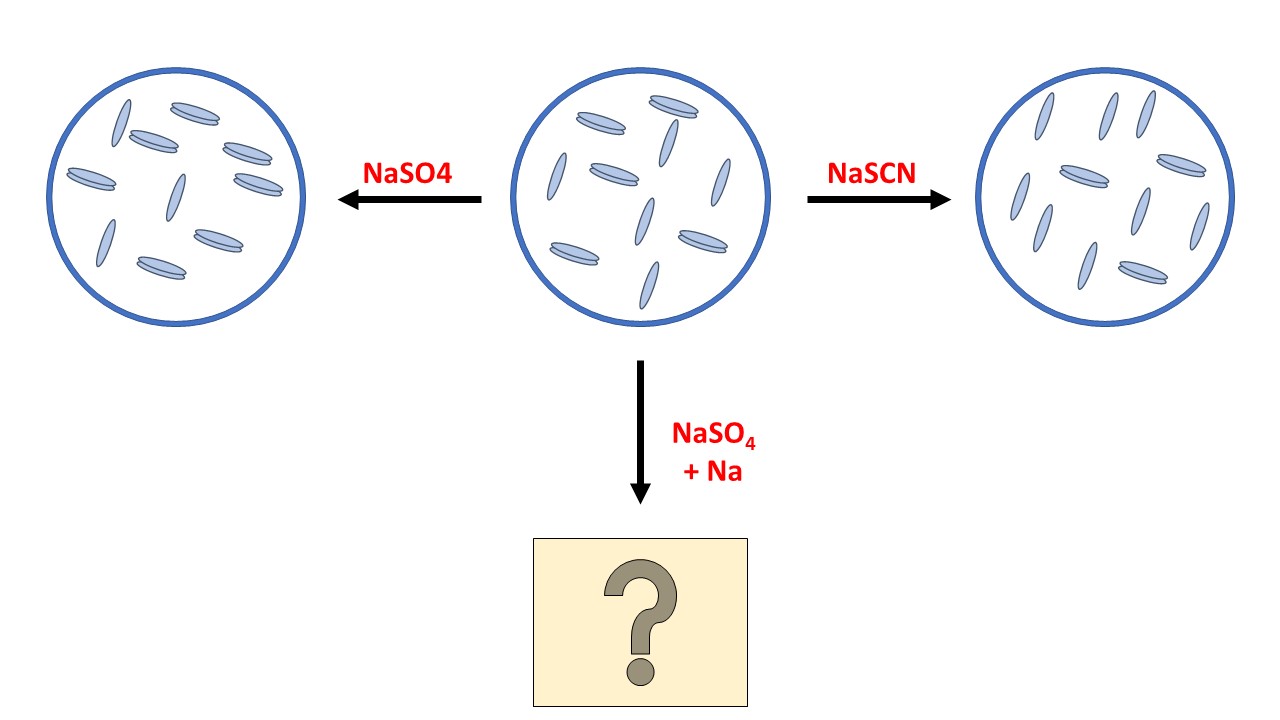
What’s in a name? Developing a method to visualize historic inscriptions in Grand Caverns
Catherine Lau1, Dr. Kayla Yurco2, Dr. Angel Garcia Jr.3
- Department of Atmospheric, Oceanic, and Earth Sciences, George Mason University, Fairfax VA, 22030
- Department of Geography, James Madison University, Harrisonburg VA, 22807
- Department of Geology and Environmental Sciences, James Madison University, Harrisonburg VA, 22807
Grand Caverns is in Grottoes, VA and is the oldest continuously operating show cave in the United States, used for tourism since 1806. Its value lies in both historical and geological features, though so far historical analysis has been primarily done using 19th and 20th century documents and signatures left by past visitors in the caverns. Many of these signatures are in a historically relevant part of Grand Caverns known as the Ballroom, where the Grand Illumination Ball was regularly held from the 1830s through the early 1900s. During this event, thousands of candles were lit in the Ballroom for hundreds of visitors who traveled to attend. Despite the natural and historical value of show caves, consistent human interaction with caverns can lead to degradation of the cavern itself. This underscores the need for a standardized surveying method for both anthropogenic and geologic cave features, and here the primary objective is to develop such a method by applying it to the Ballroom.
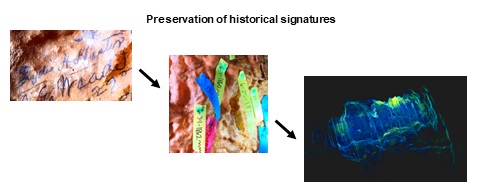
M-theory solutions on K3xK3
Audrey Lindsay and Dr. Ilarion Melnikov
Department of Physics, James Madison University, Harrisonburg, VA 22807
Our goal is to find M-theory solutions on the 11 dimensional spacetime where and are both K3 surfaces, and is the three dimensional Minkowsi spacetime. The geometric structure of describes the physics in the three dimensions. Many solutions are found that preserve 2, 4, or 8 supercharges, but our challenge is to find a solution that preserves 6 supercharges. To do so, we construct a special kind of - called a Kummer surface, which is a blow-up of the orbifold Then, we must find a hyper Kähler metric and 4-form flux that constrain the geometric structure so that 6 supercharges are preserved while not producing singularities. Our job is to determine whether we can choose the proper geometric data so that these constraints are met. A more detailed explanation of these terms and our construction will be provided, along with an update of how far we have gotten in this process.
M
Impact of Karst Features on the Relationship Between Land Cover and Water Quality
Peter Manos1, 2, Brandy Davidson3, 4, Samuel Ventura4, Dr. Bruce Wiggins4
- Department of Geology and Environmental Science, James Madison University
- Department of Geography and Environmental Studies, Hunter College
- Department of Biology, Blue Ridge Community College
- Department of Biology James Madison University
In agricultural environments, fertilizers, pesticides, herbicides, and manure pollute groundwater, and in urban environments, impervious surfaces provide pathways for non-point source pollution to flow into watersheds. In non-karst environments, soils filter out these pollutants, but in karst environments, water passes through springs, sinkholes, caves, and underground streams, so it is not always filtered through the ground as it would in non-karst environments, leading to more contaminants in the water. Therefore, if predicted land-use and water quality relationships are applied to karst environments, it is likely that the pollution will be underestimated. Our study uses GIS to calculate watershed area, the upstream land cover (% forest, % agriculture, and % impervious surfaces), the number of springs, and sinkhole area in watersheds, and compares water quality at various sites in the Shenandoah River Valley. Significant negative relationships were found between forests, sinkholes, and nitrate levels (p=0 adjusted r2=0.254), and forests, sinkholes, and turbidity levels (p=0 adjusted r2=0.381). Significant positive relationships were found between impervious surface, springs, and turbidity (p=0 adjusted r2=-0.022), agriculture, sinkholes, and nitrates (p=0 adjusted r2=0.256), as well as agriculture, sinkholes, and turbidity (p=0 adjusted r2=0.416). In the significant models, the presence of karst features had a negative correlation with the water quality, suggesting that water does not filter as well as it would in non-karst environments. This information signifies that when evaluating karst environments, we need to take additional steps to minimize pollution and improve water quality, as water flows through springs, sinkholes, caves, and underground streams instead of the soils as in non-karst environments.
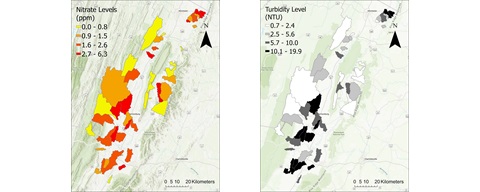
Possible diet change between June and July and the effect of other microhabitat parameters on short-tailed shrew (Blarina brevicauda) in the Edith J. Carrier Arboretum
Jacob L. McKennen and Dr. Katrina E. Gobetz
Department of Biology, James Madison University, Harrisonburg, VA 22807
Shrews are small epigeal mammals that forage for various invertebrates. Little is known about how microhabitat parameters affect shrew (Blarina brevicauda) populations; there is one known study on seasonal diet components. My study aims to find correlations between invertebrate density, humidity, and temperature on shrew weight between June and July. Remote monitoring units recorded shrew weight, behavior, temperature, and humidity. Five individuals were identified using unique markings, such as mating marks. Shrew weight averages were 14.6-20.6g and 13.4 at the two active sites. Invertebrate counts (17 Orders) were performed using quadrats at two similar woodland sites with known activity and a control site (shrews absent). One site consistently had four shrews; another site only had one. For June, one active site showed a higher density of amphipods (P-value=0.002784) of much smaller size than at the control, and one active site contained fewer invertebrate larvae (P-value=0.006115) than the control. For July, active sites showed fewer arachnids (P-value=0.038892), invertebrate eggs (P-value=0.04598), and diplopods (P-value=3.22209E-05). The higher density of smaller amphipods, in June, might mean shrews were removing larger individuals, and likely consumed invertebrate larvae among other prey. In July, shrew diet likely shifted towards arachnids, invertebrate eggs, and diplopods. To find other correlations I will also report ANOVA results for shrew weight vs. site parameters. This data aids future studies to locate and identify individual shrews and pinpoint their ideal microhabitat. This is also the first use of markings to identify individuals and provides behavioral data through video.
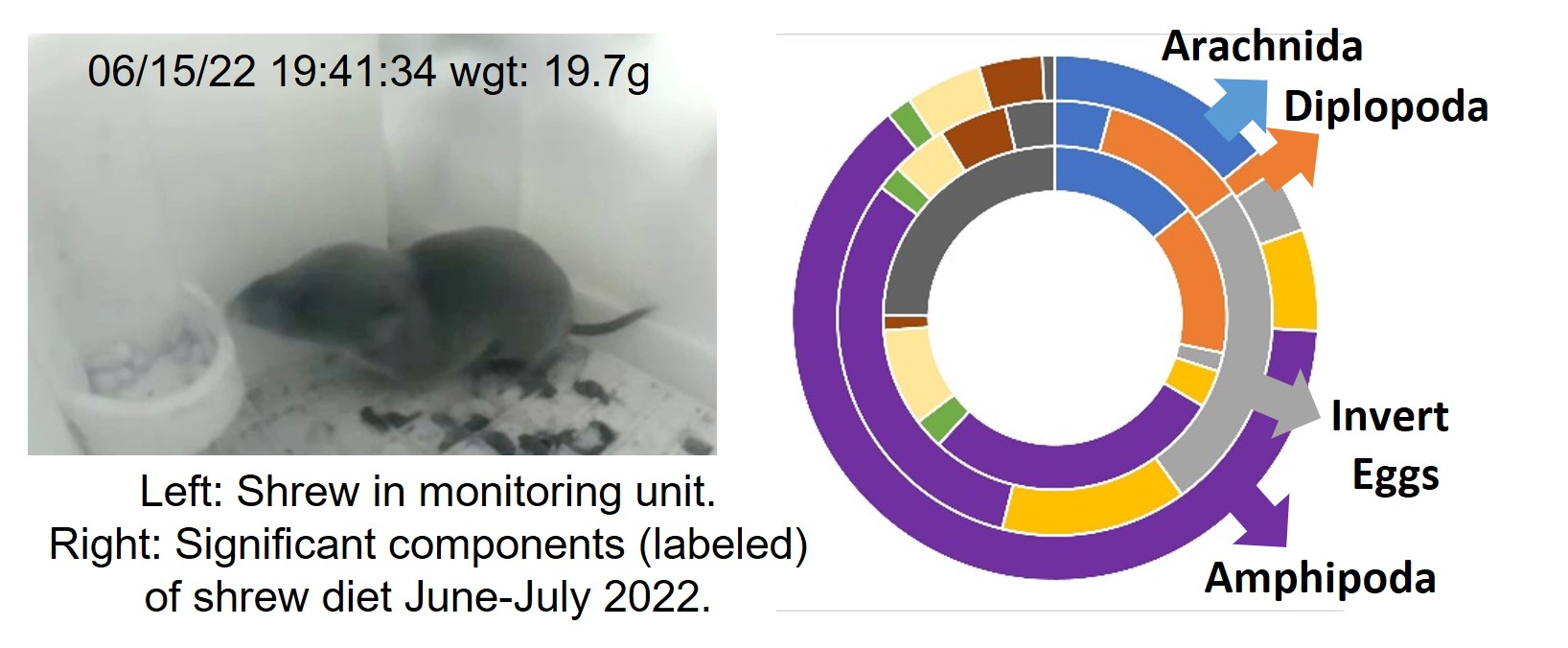
Searching for Mid-Infrared Variability in Host Galaxies of Water Megamaser Disks
Emily McPike and Dr. Anca Constantin
Department of Physics and Astronomy, James Madison University, Harrisonburg, VA 22807
Microwave Amplification by Stimulated Emission of Radiation (maser) from water molecules in galaxy centers prove to be one of the most important tools for accurate measurements of supermassive black holes and for geometric distance measurements to extragalactic astrophysical sources and therefore are crucial for providing constraints on our understanding of how the universe formed and evolves. Unfortunately, luminous water masers are notably rare, greatly hastening the need to find more. To be more efficient, future searches for water masers require a closer look at the conditions in which these emissions originate. Currently, there is tentative evidence to suggest that the maser pumping mechanism is associated with the
accretion of matter onto supermassive black holes in galactic centers, otherwise known as active galactic nuclei (AGN). Thus, we investigate herein a way of identifying AGNs in maser galaxy hosts via mid-infrared variability. Mid-infrared flux fluctuations have the advantage of being less sensitive to cosmological obscuration, but still reveal variations in the putative AGN, as the circumnuclear dust reprocesses its radiation. With this in mind, we employ here measurements from the Megamaser Cosmological Project (MCP), which offers the most complete list of galaxies surveyed for water maser emissions, as well as multiepoch mid-infrared data from Wide-field Infrared Survey Explorer (WISE), and present preliminary results of our analysis of variability in maser and non-maser galaxies.

Specific Ion Effects: Hofmeister Cations and Coumarin Fluorescence
Nina A. Metzger and Dr. Yanjie Zhang
Department of Chemistry and Biochemistry, James Madison University, Harrisonburg, VA 22807
Fluorescence, or the emission of radiation due to excitation at a specific wavelength, was used to study the interactions of Hofmeister cation series in both chlorine and bromine salts with coumarin in aqueous solution. The coumarin molecule was chosen for this study because of its fluorescent properties as well as having both hydrophobic and hydrophilic regions for ion interactions. Previous work from our research group explored Hofmeister anion interactions with coumarin. In current studies, we researched the cation effects on the fluorescence of coumarin. Results demonstrated that the divalent and most enhancing cations in chloride salts became the most quenching cations in bromide salts. Monovalent cations retained their order in the different anions. Our results indicated that anion interactions play a larger role in the fluorescent quenching bromine salts, while cations play a larger role in fluorescent enhancing chloride salts. Experiments with iodine salts further conveyed the dominant role of anions over cations in influencing the fluorescence of coumarin. Moreover, Stern-Volmer plots of fluorescent quenching were fitted linearly to monovalent cations NH4+, Cs+, Rb+, K+, Na+, Li+, and quadratic to divalent cations Ca2+, Mg2+, Sr2+, Ba2+. The effects of combined chloride salts were analyzed to further understand the cation interactions with coumarin. This led to the discovery that although both cations may be enhancing coumarin fluorescence on their own, the effects of mixing are not necessarily additive in the case of Hofmeister cations. Further experiments in mixing are needed to fully understand the role of cations in the fluorescence of coumarin.
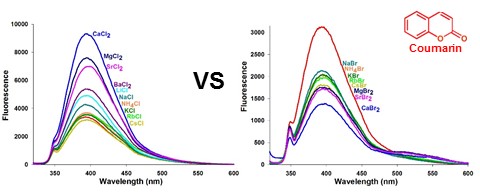
Determining the Geometry of High Energy Methanol Trimers using Computational Methods
Ruth A. Milne1 and Isaiah Sumner2
- Department of Chemistry, Saint Vincent College, Latrobe, PA, 15650
- Department of Chemistry and Biochemistry, James Madison University, Harrisonburg, VA, 22807
Methanol clusters have been the focus of study for computational chemists, since methanol is a relatively simple organic molecule, is able to form hydrogen bonds, and can have significant dispersion interactions. While low energy methanol trimers have been studied in detail, high energy trimers have not been given much thought. Previous studies report conflicting geometries without addressing the literature that contradicts their results. Specifically, two distinct geometries have been previously reported, one which is a symmetric Cs point group, and the other which is an asymmetric C1 point group. Both of these high energy geometries are branched, as opposed to lower energy trimers, which form cyclic or linear structures. In this study, we used different computational methods to correctly determine the geometry of the stable high energy branched trimer, and to compare the results across different methods. Density functional theory (DFT), second order perturbation theory (MP2), and coupled cluster theory (CCSD(T)) with a variety of basis sets were used to optimize the geometry of the trimer clusters. The most sophisticated calculations we have performed suggest that the asymmetric C1 branched trimer is the correct geometry of a high energy methanol trimer.

N
Evolution of Non-volatile Hop Compounds in Beers from 5 Different Strains of Yeast
Emma F. Nasipova,1 Dr. Christine Hughey,2 Dr. Samuel Morton3 and Dr. Steven Harper3
- Department of Chemistry and Biochemistry, Northern Kentucky University, Highland Heights, KY 41017
- Department of Chemistry and Biochemistry, James Madison University, Harrisonburg, VA 22807
- Madison Academic Brewery, Department of Engineering, James Madison University
The primary benefits of using hops in beer are their bacteriostatic activity, promotion of colloidal and foam stability as well as the characteristic bitter flavor and citrusy aroma. For this processomics study, we brewed a lineup of beers using Cascadian hops and 5 genetically different strains of yeast (Belgian Saison, California Ale, English Ale, Pilsner and Sake). We then monitored the dynamics of the molecular composition of the beer samples with triple-quadrupole liquid chromatography and mass spectrometry targeting 26 unique hop compounds. We are hoping that this study will provide a valuable molecular fingerprinting insight into the brewing process and serve as an inspiration for creative and sustainable hopping techniques.
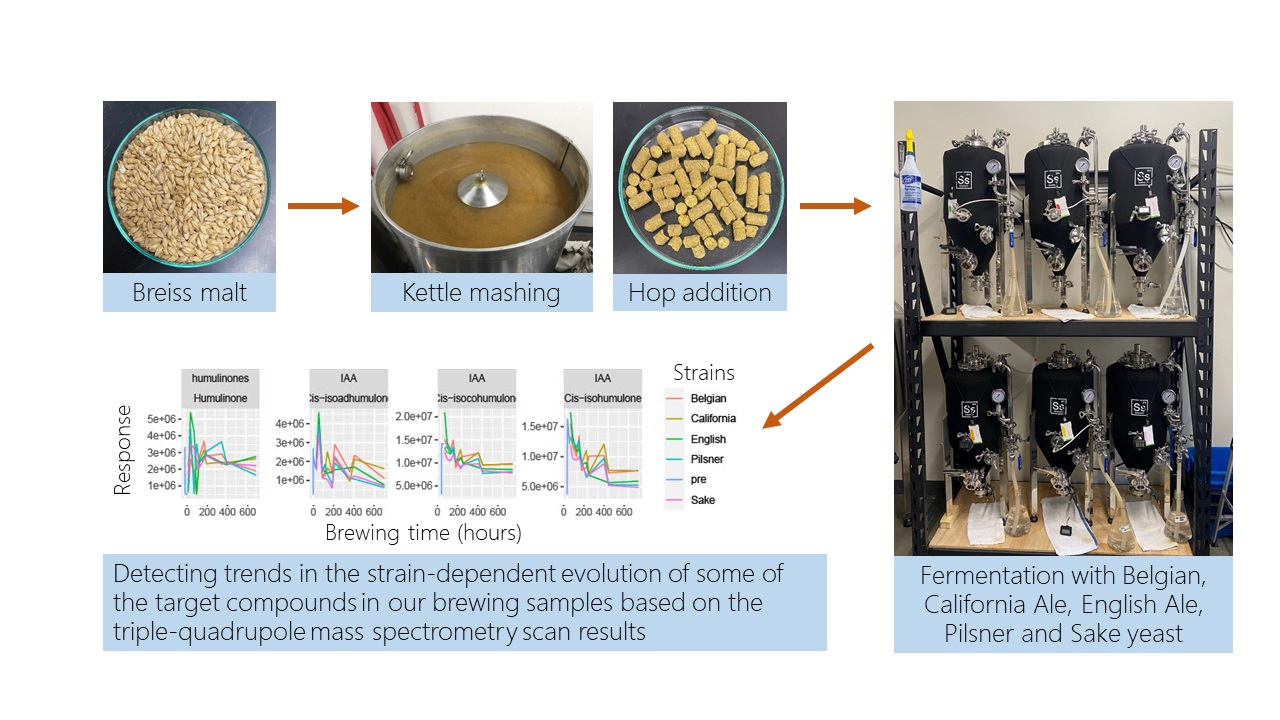
Analyzing the interactions between glucosamine and glycerol
Gabriella Newsome and Isaiah Sumner
Department of Chemistry and Biochemistry, James Madison University, Harrisonburg, VA 22807
Creating new and efficient bioplastics will reduce how much waste is polluting the environment. A mixture of chitosan (glucosamine) from shrimp shells and a glycerol plasticizer can make a new environmental friendly bioplastic. However, the molecular interactions between glucosamine and glycerol are not well understood. Therefore, we use computational chemistry to better understand the molecular interactions between the two. We employ a genetic algorithm in the OGOLEM software to calculate all possible low-energy structures formed between glucosamine and glycerol. Using a genetic algorithm helps ensure that we examined a wide variety of structures. Considering the genetic algorithm requires many calculations, a computationally inexpensive, semi-empirical method, PM7, was utilized for calculating the energies. These geometries were then sieved through DFT optimizations to increase the accuracy of the results. The structures are initially filtered with M06-2x/6-31+G(d). The final structures are calculated with M06-2x/6-311+G(2d,p). Different ratios of glucosamine and glycerol were used in this process and the lowest energy structures are compared to experimental results. Based on the data collected so far, the positive charge on the amine group in glucosamine is the dominant factor in all interactions.
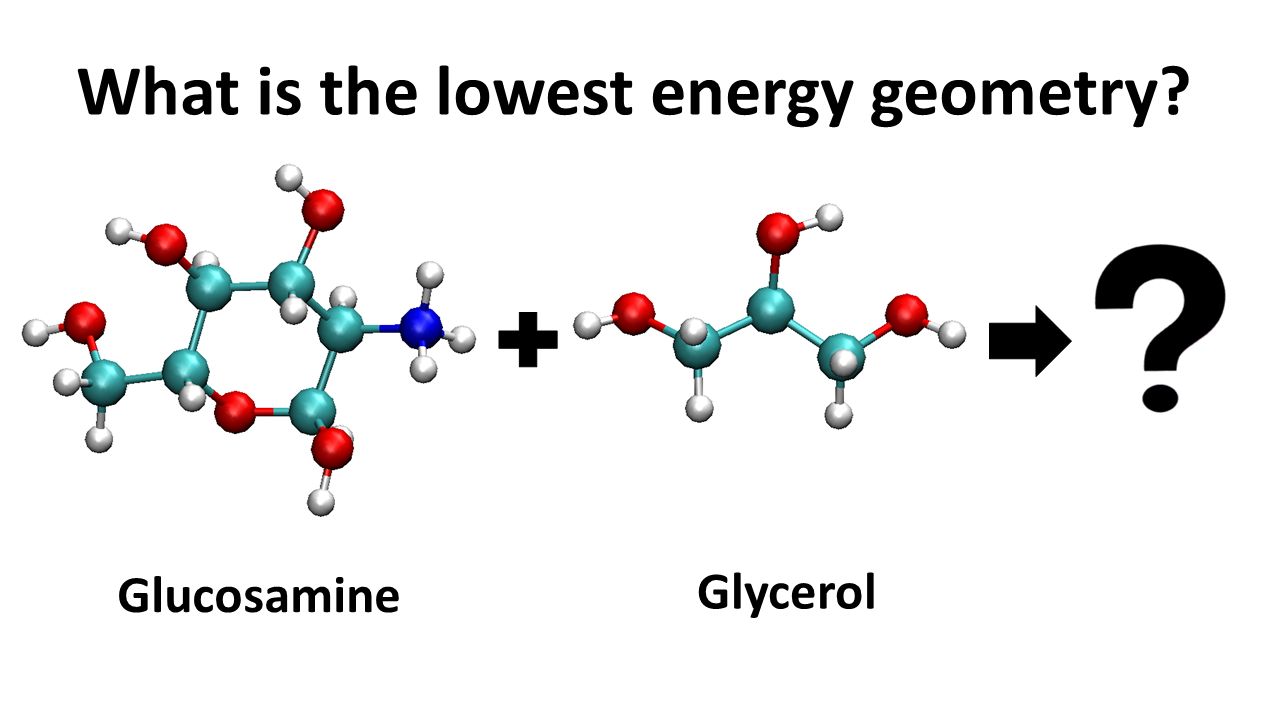
Bandaids on Broken Hearts: Preventing Protease-Mediated Degradation of Desmoplakin with Small Molecules
Roujon Nowzari, Isabel Romov, and Dr. Nathan Wright.
Department of Chemistry and Biochemistry, James Madison University, Harrisonburg, VA 22807
The desmosome is an intercellular protein complex crucial for cell-cell adhesion. Found in muscular and cutaneous tissue, the desmosome maintains tissue integrity under significant mechanical stress through the linking of cellular intermediate filament networks. Desmoplakin (DSP) is integral to the desmosome, and functions by connecting desmosomal cadherins to intermediate filaments. Multiple missense mutations in a DSP ‘hotspot region’ (residues 299–515) are causally linked to arrhythmogenic cardiomyopathy. Mutated DSP maintains structural integrity. However, mutations expose a normally occluded calpain cleavage site (residues 447-451), resulting in decreased protein levels in affected tissues. Calpain is crucial for normal muscle development and maintenance. Therefore, instead of inhibiting calpain function, here we aim to find a “molecular band-aid” for DSP; a molecule that blocks this cleavage site without influencing calpain function. We have partially screened a library of FDA-approved drugs by monitoring fluorescence polarization of FITC-labeled DSP in the presence of protease. Molecules that prevent degradation are subjected to a secondary assay against FITC-BSA to screen for protease-specific inhibition. Molecules that specifically inhibit DSP degradation but not BSA degradation are then subjected to MD-based drug docking studies. Preliminary data reveal that drug ‘hits’ tend to be larger organic molecules. Most, but not all, of these molecules stay bound to DSP over >50ns of simulation, and in addition have smaller calculated dissociation constants. Together, these preliminary data validate the feasibility of this workflow for identifying promising small molecules that prevent DSP degradation.
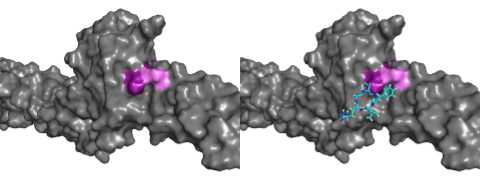
Implementation of Statistical Learning Methods to Classify and Predict Water Maser Phenomena
Ty J. Nunley1, Dr. Anca Constantin2, Dr. Nusrat Jahan1
- Department of Mathematics and Statistics, James Madison University, Harrisonburg, VA 22807
- Department of Physics and Astronomy, James Madison University, Harrisonburg, VA 22807
We present here an investigation of the power of statistical learning techniques to classify and predict new Microwave Amplification by Stimulated Emission of Radiation (maser) emissions from galaxy centers. The maser phenomenon is important because when detected at levels that surpass millions of times the brightness of similar emissions in star forming regions of our galaxy (i.e., mega-masers), it can be used as a unique tool to constrain both masses of supermassive black holes and the current cosmological models (and therefore the fate of the universe). Unfortunately, mega-maser detections are extremely rare, accounting for ~3% of all surveyed galaxies. We use supervised principal component analysis (SPCA) and random forests to develop a classification tool to distinguish between the non-maser and mega-maser galaxies based on optical data. The SPCA allows us to identify the most relevant optical properties for discriminating between mega-masers and non-masers, and the random forests allows us to make predictions for new mega-maser identifications in future galaxy surveys.
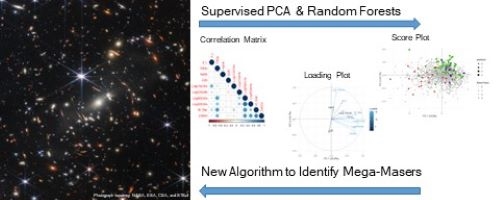
O
The Impact of Obscurin on Cellular Area and Perimeter and Membrane Colocalization
Mason Ong, Dr. Callie A. Miller, and Dr. Nathan T. Wright
Department of Chemistry and Biochemistry, James Madison University, Harrisonburg, VA 22807
Obscurin is a giant signaling protein believed to be responsible for resisting applied forces on a cell. We believe obscurin localizes to areas of high tension to mitigate the impact of cellular forces. Two main questions have arisen while observing this protein: (1) what is the effect of obscurin on cells’ area and perimeter, and (2) where does obscurin move within the cell over time. While these phenotypic traits can sometimes be observed and described visually, e.g. “by eye,” the challenge is finding a way to quantify these properties. To address the first question to measure cell area and perimeter, we used a machine learning algorithm called Weka within the FIJI image analysis software to accurately segment many cells at once. Once the background, cell membrane, and cell interior are characterized in the image, area and perimeter statistics can be pulled for further analysis in a Python program. This program compares the mean area and perimeter between experimental conditions using t-tests to help identify significant differences in cell area and perimeter. The main findings from this analysis are that the presence of Blebbistatin, a drug that inhibits myosin II, generally decreases the overall size of the cell, while the presence of Cytochalasin D, a drug that inhibits actin polymerization, increases cell size. To determine where obscurin moves within the cell over time, we utilized two complementary approaches, kymograph and colocalization plots. These two techniques can help determine how much obscurin is present within the cell, and where that obscurin is located relative to the cell membrane. This experimental analysis is still in its early stages, and more data is needed to make a conclusive determination on the typical localization of obscurin within a host cell, but preliminary results suggest membrane colocalization occurs when the cell is not overloaded with obscurin.

Using Image Analysis Software to Efficiently Track and Measure Cellular Mechanics
Stephanie Ouderkirk1, Dr. Callie Miller2, and Dr. Nathan Wright1
- Department of Chemistry and Biochemistry, James Madison University, Harrisonburg, VA 22807
- Department of Engineering, James Madison University, Harrisonburg VA 22807
Cells are quite dynamic: they are changing shape, stretching, contracting, dividing, and dying almost constantly. These events are helpful in identifying healthy conditions versus unhealthy conditions, but there does not exist a robust and consistent process for deriving measurements from these events. The purpose of this study is to utilize a process using image analysis software to track and measure changes in cell area, perimeter, and velocity over time. Once we have quantified these properties, then we can relate them to a possible mechanosensing protein, obscurin, we believe affects cell mobility. We regularly collect microscopic time-lapses of cell movements over approximately four to ten hours (25-61 frames, 10 mins/frame) and consider multiple experimental conditions in controlled versus treated environments. If we were to manually measure the cell area, perimeter, and velocity of all cells, it would take countless hours. To efficiently quantify the data, we use the image analysis software, ImageJ, with a machine learning plugin, WEKA, for cell identification and a plugin, Mtrack2, for quantifying movements. The process for measuring the area and perimeter of the cells involves preprocessing the movies to enhance regions of interest, using WEKA to identify cell membranes and interiors, then measuring the identified cellular areas in each frame. The process for measuring cell velocity involves transferring the WEKA identified cell area into Mtrack2, where the midpoint of the cell is tracked by the plugin throughout time. We then transfer the WEKA calculated area to a second experimentally collected data channel, where only obscurin is pictured, to measure the percent pixel intensity of obscurin present in each cell. This is important because two movies under the same controlled conditions were annotated. The first movie had a 0.0026 linear coefficient of determination and the second had a 0.0228 linear coefficient of determination when relating the amount of obscurin present in the cell to the velocity of the cell. We could therefore determine that the velocity of the cell is not related to the amount of obscurin present in the cell under controlled conditions.
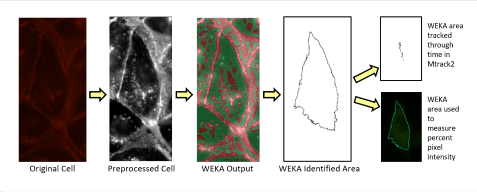
P
Quality Control of Fluorescence Polarization Over Gel-Based Assays
Clay Page, Isabel Romov, and Dr. Nathan T. Wright
Department of Chemistry and Biochemistry, James Madison University, Harrisonburg, VA 22807
Desmoplakin (DSP) is an integral part of the desmosome, the intercellular junction that links the intermediate filaments of adjacent cells. Specific mutations in DSP (R451G, S507F, S442F, and S299R) result in calpain hypersensitivity. Our long-term objective is to reduce this hypersensitivity by occluding the protease binding site of DSP with small molecule drugs or other molecules. To do this type of screening efficiently, we need a reliable, robust, and inexpensive DSP screening method. However, existing DSP expression constructs are low yield. Also, existing methods of observing degradation rates are done via a protein and time-intensive gel-based assay. Last, calpain is expensive. Here we describe a new fluorescence polarization assay to detect DSP degradation using both a shorter FITC-labeled DSP construct and using trypsin as the protease. We show that this shorter construct is susceptible to degradation however the mutants degrade at a faster rate. We also show that trypsin was a reasonable substitute for calpain. Having now developed these new reagents and methods, we are well-positioned to screen for ways to rescue DSP mutants.
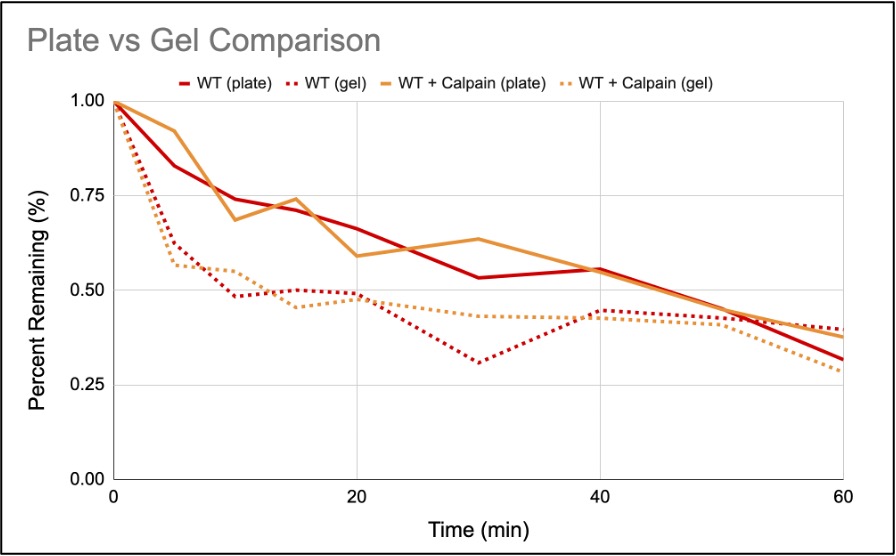
R
Substrate Specificity and Kinetic Parameters of 12α-Hydroxysteroid Dehydrogenase with Cholic Acid
Larisa Ramos Diaz, Chloe Caplinger, Dr. Rippa Sehgal
- Department of Chemistry and Biochemistry, James Madison University, Harrisonburg, VA 22807
- Department of Biochemistry, Bridgewater College, Bridgewater, VA 22812
Bile acids are essential to maintain gut health, but at higher concentrations they are linked to diseases such as cancers in different parts of the gastrointestinal tract. 12α-Hydroxysteroid Dehydrogenases are enzymes produced by gut bacteria that are known to oxidize bile acids and transform them from the toxic to the nontoxic forms. The focus of the research is to determine the kinetic parameters of the conversion of cholic acid to deoxycholic acid, catalyzed by 12α-HSDH in the presence of NADP+ by replacing the hydroxyl group at 12-C position with keto group. Using recombinant plasmid from Methanosphaera stadtmanae, 12α-HSDH was overexpressed in aerobic conditions by IPTG induction. It was found that growing cultures in flask with one fourth of its volume generated twice the amount of cell pellets compared to half of flask volume. The crude extract from pellets was tested to confirm the activity of the enzyme spectrophotometrically at 340 nm by measuring the reduction of NADP+ to NADPH. The His-tagged protein was purified using Immobilized Metal Affinity Chromatography and confirmed for MW 29 kDa using SDS-PAGE. Results from the scans with NAD+ confirmed that 12 α-HSDH is strictly NADP+ dependent with bile acid substrates and does not show any activity with NAD+. The enzyme was confirmed to have optimal activity at pH 7.9. The phylogenetic analysis of the enzyme proved that it belongs to the short-chain dehydrogenase and reductase (SDR) family. The steady state kinetic parameters for the reduction of NADP+ are measured through initial rates. The rates obtained as a function of various CA concentrations and fixed NADP concentration are fit to the Michaelis- Menten equation and gave the Km of 0.7247 mM. We are in the process of screening the enzyme for crystal growth.
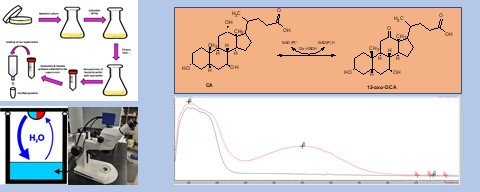
Synthesis of N-Benzotriazolyl and N-Pyrazolyl Derivatives as Chelating Ligands for Ruthenium and Palladium Complexes
Stuart A. Regitz, Connor J. Pearson, Donna S. Amenta, John W. Gilje
Department of Chemistry and Biochemistry, James Madison University, Harrisonburg, VA 22807
Chelating hemilabile ligands are of interest for applications in organometallic catalysis. In this respect, N-benzotriazolyl and N-pyrazolyl derivatives have been previously studied as potential metal chelates. In this study, the reaction of benzotriazole and methyl acrylate without solvent or catalyst resulted in an isomeric mixture of N-benzotriazolylpropanoate derivatives (L1, L2) in high yields by a Michael addition. An analogous reaction of 3,5-dimethylpyrazole and methyl acrylate produced an N-pyrazolylpropanoate derivative (L3). The reactions of L1, L2, L3, and a previously prepared N-benzotriazolylpropanamide derivative (L4, L5) with RuCl2(PPh3)3 and (COD)RuCl2 were investigated by IR and NMR spectroscopy. Reactions of L1 with RuCl2(PPh3)3 yielded a red/orange precipitate assigned to a Ru complex in which the ligand binds in a bidentate fashion. 31P NMR studies indicated that the complex transitions into a bridged structure in solution. Reactions of L3 with (COD)PdCl2 initially yielded a monodentate trans complex that isomerizes reversibly to the cis isomer. The kinetics of the isomerization was analyzed using NMR spectroscopy.
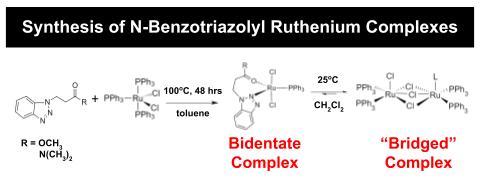
X-ray Obscuration around Supermassive Black Holes in Active Galaxies
Abraham Reines and Dr. Keigo Fukumura
Department of Physics and Astronomy, James Madison University, Harrisonburg, VA 22807
We investigate Active Galactic Nuclei (AGN), identified as Supermassive Black Holes (BH) in highly luminous galaxies. These BH are surrounded by accreting plasma disks known as accretion disks. In this model, hard X-ray continua from AGN (i.e. corona) can be substantially photoionized and absorbed by winds of plasma particles launched from the accretion disk. Many X-ray spectroscopic observations suggest a majority of AGNs are obscured by an intervening gas along our line of sight. In this work, we aim to simulate the observed AGN obscuration distribution. Our model employs a Magnetohydrodynamic (MHD) phenomenon responsible for the outflow of plasma particles and ions launched from the accreting disk. By utilizing magnetized disk wind models, we develop and construct a computational scheme allowing the calculation of absorption features for AGN hard X-ray spectrum (e.g. 5keV – 50keV). We discuss a plausibility of the model by comparing our theoretical obscuration distribution to X-ray data and create a library of synthetic absorption spectra of X-ray continua. This obscuration is quantified using a simple column density value (e.g., NH ~ 1023 – 1025 cm-2). Using our obscuration findings, we show how the obscuration distribution is dependent on the model parameters, e.g. the fraction of obscured AGN as a function of AGN luminosity which can be tested against a large sample of observed AGN surveys in literature. We also propose our findings’ physical meaning correlating with observed findings and our MHD model.
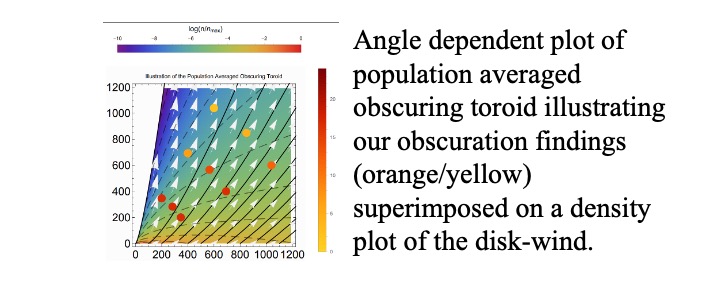
Evolution of volatile flavor compounds produced during the fermentation of beer with genetically different yeast
Andrew Roberts1, Viridiana Tirado2, Steven Harper3, Samuel A. Morton3, Christine A. Hughey1
- Department of Chemistry and Biochemistry, James Madison University, Harrisonburg, VA 22807, USA
- Bakersfield College, Physical Sciences Department, Bakersfield, CA 93305
- Madison Academic Brewery (MAB), Department of Engineering, James Madison University, MSC 4113, Harrisonburg, VA 22807, USA
Beer is a complex mixture of volatile and nonvolatile compounds that arise from the malt, hops, and fermentation. A wort brewed from a 2-row malt and Cascade hops was equally divided between five fermenters. A genetically different yeast was pitched in each: WLP 001 California Ale, WLP 002 English Ale, WLP 566 Belgian Saison, WLP 800 Czech Pilsner Lager, Wyeast 4347 Extreme Fermentation. Here we focus on the flavor compounds produced during fermentation. Compounds were extracted from the sample headspace by solid-phase microextraction (SPME). Compounds were identified and quantified by GC/MS. Due to time limitations, we compared only the English and Belgian yeast. The volatile compounds can be categorized into compound classes, such as aldehydes, terpenes, fusel alcohols, and esters. During mashing, the wort is primarily composed of aldehydes and ketones. Terpenes are present during boiling and early fermentation. Alcohols and esters are formed during fermentation. The Belgian Saison yeast contains higher amounts of alcohols and esters compared to the English Ale. Meanwhile the beer with the English Ale had aldehydes present at greater response ratios compared to the Belgian Saison yeast.
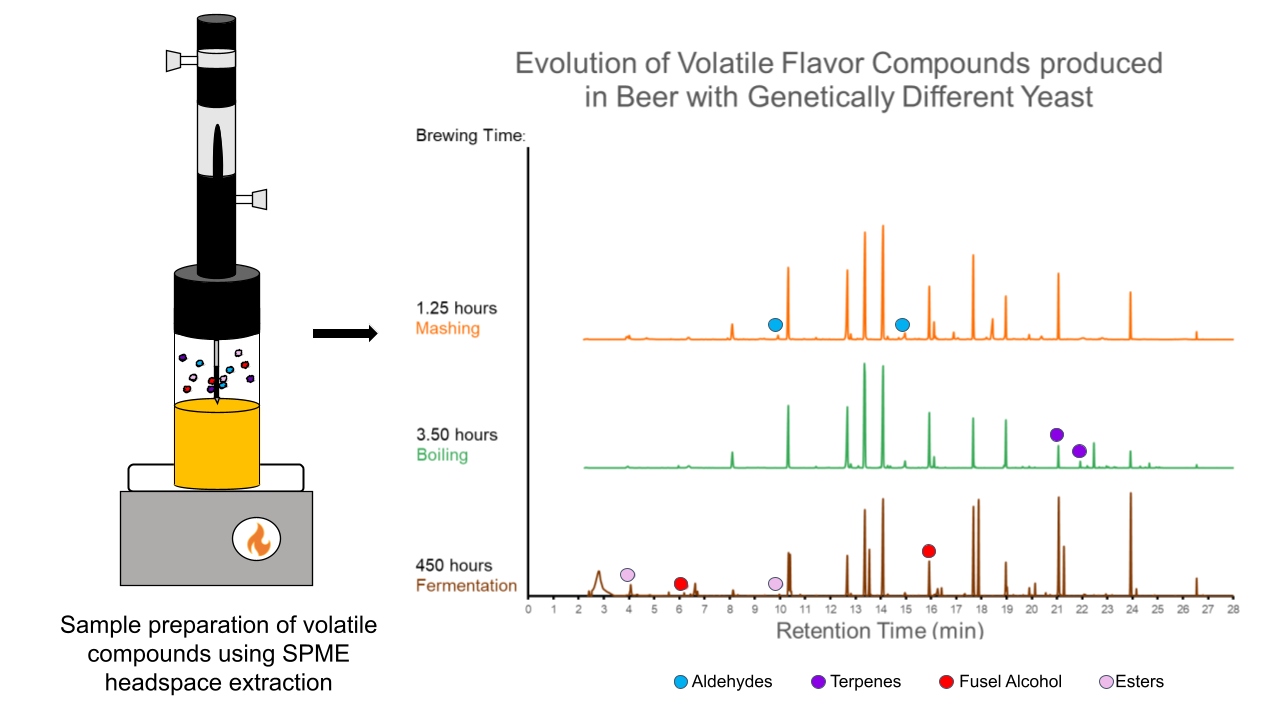
Rational Design of Ultrafast PpcA-Ru(bpy)3 Complexes
Zachary Ryan, Oleksandr Kokhan
Department of Chemistry and Biochemistry, James Madison University, Harrisonburg, VA 22807
Converting light energy into its electrochemical equivalent requires precise control and fine-tuning of relevant kinetic and thermodynamic parameters of electron transfer (ET) steps. A particularly big challenge for artificial photosynthesis is to create the primary charge separation on the ultrafast (sub-nanosecond) time scale, as slower reactions are likely to require precious metal photosensitizers and produce significant amounts of reactive oxygen species. However, the structural requirements for ultrafast ET are poorly understood. The previous work from our lab has demonstrated that ET rates do not strictly depend on the distances. Similarly, we have demonstrated that short ET pathways through covalent bonds do not always result in ultrafast ET. We hypothesize that a rigid attachment of photosensitizers and efficient heat dissipation into the protein framework are needed for ultrafast ET. To test this hypothesis, we developed 13 new mutant forms of PpcA with the attachment cysteine sites showing restricted solvent exposure. We successfully labeled 11 out of 13 with Ru(bpy)3 and observed the expected complex masses in LC-MS. Analytical size-exclusion chromatography revealed the absence of aggregation and predominantly monomeric forms. Temperature-dependent circular dichroism (CD) spectroscopy showed the absence of any significant destabilization of the protein structure due to mutations and photosensitizer attachment, apart from I38CRu. Finally, we measured electron transfer rates that show that 9 out of 11 PpcA-Ru(bpy)3 complexes show ultra-fast electron transfer.

S
Morphological Study of TiO2 Nanoparticles on Au(111)
Erin Schell, John Yoo and Dr. Baber
Department of Chemistry and Biochemistry, James Madison University, Harrisonburg, VA 22807
TiO2 nanoparticles (NPs) supported on Au(111) forms an inverse model catalyst that is active for alcohol oxidation and reduction. To fully understand the influence that the nanoparticle structure has on alcohol reactivity, TiO2/Au(111) catalysts were synthesized and characterized. TiO2 NPs were deposited on Au(111) in an O2 background under ultrahigh vacuum (UHV) conditions. The reactivity of the TiO2/Au(111) was tested using butanol temperature programmed reaction spectroscopy (TPRS). Two TiO2 deposition times were studied, resulting in TiO2 coverages of 0.13 ML and 0.26 ML, as determined by atomic force microscopy (AFM). In addition to quantifying TiO2 coverages, the morphology and distribution of TiO2 NPs was observed with AFM. To obtain the clearest images possible, the TiO2/Au(111) samples were briefly annealed with a H2 flame to clean contaminates from the surface. The H2 flame anneal did not affect the TiO2 morphology. With longer TiO2 deposition time, the TiO2 coverage increased, but particle size remained the same. Interestingly, the higher coverage of TiO2 resulted in more consistent reactivity with butanol isomers, whereas the smaller coverage of TiO2 NPs showed low reactivity. AFM images suggest that the difference in reactivity is likely due to the lower number of particles rather than to differences in the size and shape of TiO2 NPs. These results help to inform the design of more active catalysts for alcohol partial oxidation.
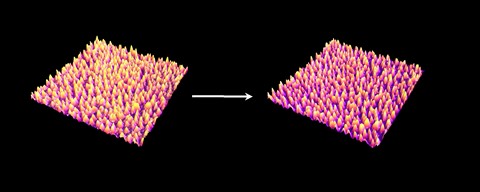
Insight into soil development in caves and water flow intensity using soil analysis at Owl Cave, Highland County, Virginia
Spencer Schmidt1 and Dhanuska Wijesinghe2
- Department of Earth and Atmospheric Sciences, University of Nebraska-Lincoln, Lincoln, NE
- Department of Geology and Environmental Science, James Madison University, Harrisonburg, VA
Mobile sediments near caves can have a profound influence on sediment transport within cave systems. Variation in inside sediments can provide insight for water flow during various stages of cave development and the energy during deposition. Few studies have characterized inside cave sediments, despite the recorded variability. A previous study observed a decrease in organic carbon (OC) content from the entrance to dark inside chambers in the Trémies submarine cave system near Marseille, France. The present study is juxtaposed the particle size distribution and OC contents of five soil cores collected from Owl cave in Highland County, Virginia. Of the five core, two sediment cores have been analyzed, one from inside the cave and the other from the cave entrance. Determination of the particle size distribution was performed before and after removal of OC using laser diffraction. The loss on ignition method removed the OC, allowing the percentage of OC to be determined. Pooled T-tests gave insight into the variability particle sizes and organic carbon of the two studied cores. Regardless of the removal of organic carbon, the inside samples indicated significantly higher sand content compared to the entrance. Silt content at the cave entrance were significantly higher than inside, while there was not significant variation in the clay content after removing OC. The percentage of OC inside the cave was below 5% while the entrance sample decreased from ~7% at the surface to below 5%. These finding suggest there is a greater variability in the distribution of particles sizes after the removal of OC. Further, the difference of particle sizes inside and outside the cave are attributed to limited sediment exchange during high intensity storms and weathering of the cave walls. The difference between the silt contents indicates constant water flow and suggests finer sediments were removed from the cave as suspended load.

A Computational Pipeline to Detect Novel SARS-2-COV Variants
Dakota A. Scott1, Sanda Thura1, Dr. Kevin Molloy1,2
- Department of Computer Science, James Madison University, Harrisonburg, VA. 22807
- School of Biology, James Madison University, Harrisonburg, VA. 22807
SARS-CoV-2, the virus responsible for COVID, has caused a world-wide epidemic resulting in millions of fatalities and global business/logistical challenges. The "spike" protein portions of the virus bind to the angiotensin converting enzyme 2 (ACE-2). Scientists have cataloged over seven million different variants of this protein. However, only a small number of these variants have significantly altered the virus’ structure and thus characteristics. Our work attempts to organize the spike protein variants so that mutations that have similar behaviors are clustered together. The end goal of this work is to create a computational pipeline, such that new sequence variants can be rapidly identified either as part of an existing cluster or one that represents a novel change and therefore potentially cause a new wave or COVID infections with different behavioral properties. Some of these techniques include utilizing sequence similarity measurements and clustering (CD-HIT) and exploiting Google's new computational protein structure prediction method known as AlphaFold2.

Microscopic Springs: Investigating Viscoelastic and Elastic Tendencies of the Cell Membrane
Alex Sedley, Dr. Callie Miller1, and Dr. Nate Wright2
- Department of Engineering, James Madison University, Harrisonburg, VA 22807
- Department of Chemistry and Biochemistry, James Madison University, Harrisonburg, VA 22807
Cell membranes are normally thought of as a viscoelastic material, where it exhibits both viscous and elastic properties while deforming. Due to this combination of properties, it can be challenging to determine the location and magnitude of tension a cell membrane experiences when splitting. The purpose of this research was to learn if the tensile forces the membrane experiences can be described by a simple Hooke’s Law spring equation or a viscoelastic equation. ImageJ and MATLAB were used for gathering and quantifying experimental data. Custom macros in ImageJ collect the XY coordinates that map out the cell’s membrane for each frame of an experimental microscope time-lapse. We built functions in MATLAB for taking those coordinates, transforming them to be centered, segmenting them based on arctan values into specific angle categories, and calculating the force the membrane experiences when treated as both an elastic spring and viscoelastic material as it deforms during the experiment. The mathematical model in MATLAB generates plots of the force the membrane experiences over each experimental frame if we assume the membrane is elastic and viscoelastic. The model also shows that when a cell is splitting, it experiences an overall change in membrane length that is increasing, meaning the cell is expanding. The plots suggest that the cell membrane can be treated as a viscoelastic material under small time scales (less than 3 minutes) and as an elastic spring for larger times scale deformations. To validate these results experimentally, we will use a laser ablation technique to “measure” the tension present in the cell membrane before using the laser to blast a hole in the membrane. We will then use experimental measurements of cell membrane tension to compare to our elastic and viscoelastic membrane models to determine which is most appropriate moving forward.

Overcoming Degradation: A Novel Synthetic Strategy for Antisense Oligonucleotide Analogs
Eric Shepard, Max Kelly and Dr. Debra Mohler
Department of Chemistry and Biochemistry, James Madison University, Harrisonburg, VA 22807
Antisense oligonucleotide analogs (ASOs) are short synthetically crafted or modified pieces of DNA or RNA that can attach themselves to existing messenger RNA (mRNA) to prohibit protein synthesis. Such molecules could be used to prevent unwanted protein production in existing cells or organisms. This would allow for the future prevention of protein and ribosome-based diseases in humans and possibly reduce the antibiotic resistance of bacterial organisms. The challenges faced by ASOs are a lack of stability, little defense against exonuclease compounds, and as a result a poor shelf life. To combat these complications novel synthetic pathways to form 7-membered rings were performed. Rings containing the bases Adenine, Cytosine, Thymine, Guanine, and Uracil have been successfully created. Additionally, a new focus on a possible 9-membered ring is underway.
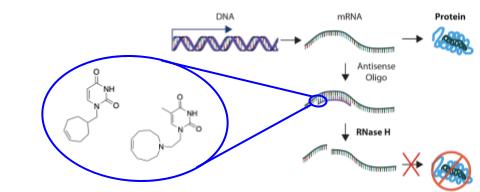
Investigating the complex of Cone-Rod Homeobox (CRX) and the p300 KIX domain.
Elise M. Candelario1, Abigail E. Sholes2, Raymond A. Enke3, and Christopher E. Berndsen4
- Department of Health Sciences, James Madison University, Harrisonburg VA, 22807
- Department of Psychology, James Madison University, Harrisonburg VA, 22807
- Department of Biology, James Madison University, Harrisonburg VA, 22807
- Department of Chemistry and Biochemsitry, James Madison University, Harrisonburg VA, 22807
Roses are red, some eyes are blue, you wouldn’t see this without CRX too. The CRX protein is a mammalian retina-specific transcription factor critical for rod and cone photoreceptor development. Rod photoreceptors detect motion, achromatic vision, and allow for low light vision Cone photoreceptors provide color vision, and allow for bright light vision. CRX is proposed to work with various other transcription factors to regulate proper development of adult retinal photoreceptors. Mutations in CRX lead to various blinding retinopathies, such as Retinitis Pigmentosa, Cone Rod Dystrophy, and Leber Congenital Amaurosis. While the importance of CRX to human vision is well characterized, there is little known about the structure of the protein, particularly the AD. Determining the structure and function of CRX, as well as the way it interacts with other transcription factors and proteins, can help us understand ways to combat improper photoreceptor development and subsequent vision issues.

Determining the influence of fibronectin matrix synthesis on cell migration and persistence
Kayla Sims and Dr. Kristopher Kubow
Department of Biology, James Madison University, Harrisonburg, VA 22807
Extracellular matrix production and cell migration are critical elements of tissue regeneration and wound healing. Both migration and matrix synthesis depend on cell-generated forces, cell-matrix adhesions, and use similar cytoskeletal components. Considering they share similar mechanisms, we hypothesized that the two processes impact one another. As cells synthesize more matrix, the number of cell-matrix adhesion sites should increase, causing the cells to migrate in a slower fashion. In addition, matrix fibers should influence the direction of cell migration as the cells create adhesions to the matrix, causing the cells’ migration pattern to become more persistent. These hypotheses were tested by observing cell migration with and without fibronectin matrix production using time lapse microscopy. Matrix synthesis was stimulated by giving the cells supplemental fibronectin and inhibited by using a fibronectin matrix inhibitor. Treatments were verified using fluorescence immunostaining to confirm the efficiency of the experimental system. While there were minor trends within the data, there was no significant effect of matrix synthesis on cell speed or persistence, likely due to the variability of the cells. Although cell migration and extracellular matrix deposition share the same mechanisms, they do not appear to antagonize one another based on our findings. For future experimentation, the effects of cell-to-cell variance could be minimized by comparing the matrix production and migration of specific, individual cells.

Development of Modern Virtual Scientific Instruments for use in Chemical Education
Lauren Slaber1, Ronal Gomez2, Brenna Sermania2, Shayan Shamloo2, Nicholas VanFossen2, Michael Stewart2, and Paul Raston1
- Department of Chemistry and Biochemistry, James Madison University, Harrisonburg, Virginia, USA
- Department of Computer Science, James Madison University, Harrisonburg, Virginia, USA
We recently began to develop a suite of modern virtual scientific instruments (VSI’s) that span many of the core spectrometers that are available in most chemistry departments, in addition to some less common, technically interesting ones. The motivation for their development comes from difficulties associated with online learning during lockdown, when departmentally housed spectrometers could not be accessed. Aside from a virtual helium nanodroplet isolation spectrometer, which was mainly used as a testing ground for different programming tools, we are developing a virtual Fourier transform infrared (FTIR) spectrometer, which can simulate the high-resolution gas-phase spectra of molecules that are typically investigated in Physical Chemistry Lab courses (e.g., HCl, CO, CO2). The backend makes use of the HITRAN database [1] and RADIS [2], which allows for efficient generation of “clean” transmission spectra of all naturally occurring isotopologues of a particular molecule. The frontend allows for the user to select a set of input parameters in a similar way to commercially available FTIR’s. The “clean” spectra are processed (“dirtied”) by convoluting them with the blackbody spectrum of the source, the transmission spectra of the optical elements, and the detector response spectrum; noise is also added in, which slowly decreases in magnitude with averaging. The user is encouraged to explore various components of the spectrometer while this (averaging) occurs, by scrolling over them to reveal popup descriptions. The resulting synthetic spectrum can then by (partially) analyzed with a built-in interface that allows for determination of peak centers and intensities.
- I. E. Gordon et al., “The HITRAN2020 molecular spectroscopic database”, Journal of Quantitative Spectroscopy and Radiative Transfer, 277, 107949; 1-82 (2022).
- E. Pannier and C. O. Laux., “RADIS: A nonequilibrium line-by-line radiative code for CO2 and HITRAN-like database species”, Journal of Quantitative Spectroscopy and Radiative Transfer, 222-223, 12-25 (2019).
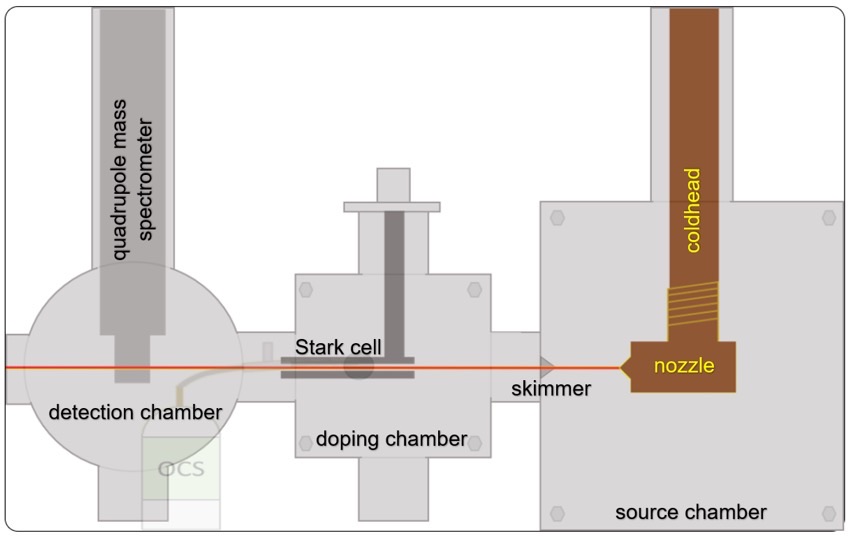
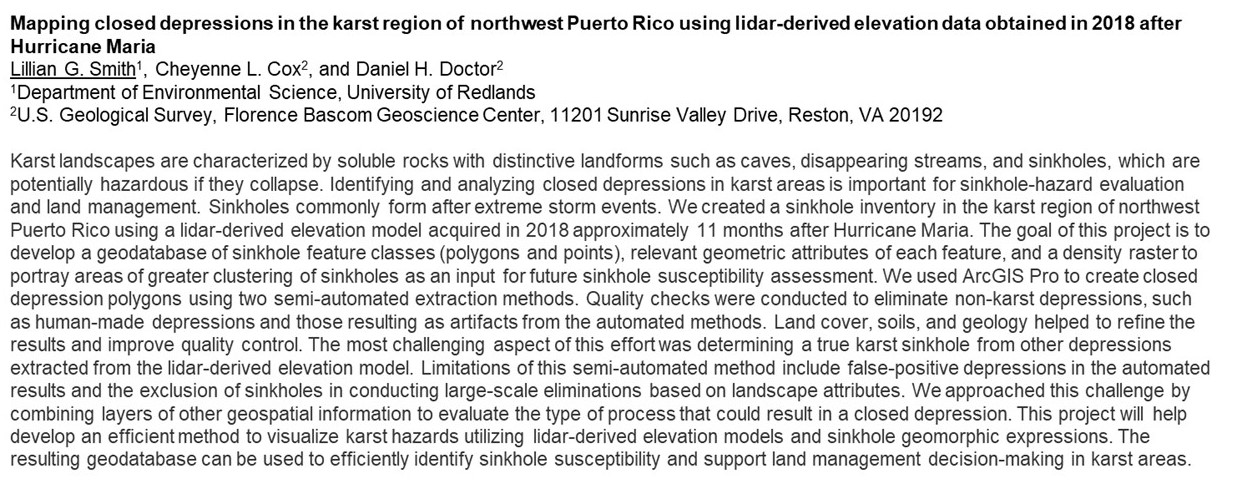
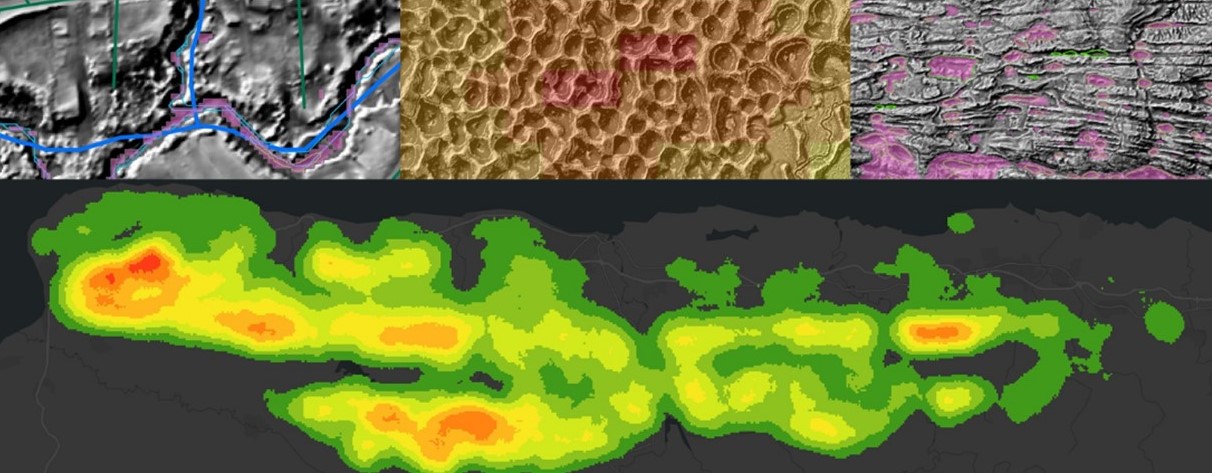
Geometric measurements on compressed, constrained cylindrical shells
Ben Stallard, Klebert Feitosa, Luis De Cunto, Marcelo Dias
Gaussian curvature is an intrinsic property of surfaces, defined only by the distance between points along the surface. That is, if the surface does not stretch or compress, Gaussian curvature is preserved. This leads to a number of interesting phenomena for inextensible sheets. We investigate crumpling behavior of thin sheets: the spontaneous focusing of energy in localized creases. All crumples can be decomposed into only 2 building blocks, point-like and line-like structures termed d-cones and stretching ridges, respectively. We investigate how these structures populate the surface of a compressed, constrained, thin cylindrical shell, and how the geometry of these features evolves as we approach the isometric, thin-sheet, limit. We find, in concurrence with previous work, that magnitude of these features depends only weakly on the thickness of the sheet, and much more strongly on the gap between the sheet and the mandrel. Understanding these interactions is key to predicting and reliably reproducing a wide array of desirable phenomena in thin sheets, such as changing the orientation or texture of a surface with only small forces applied at the boundary for applications in bendable electronics.
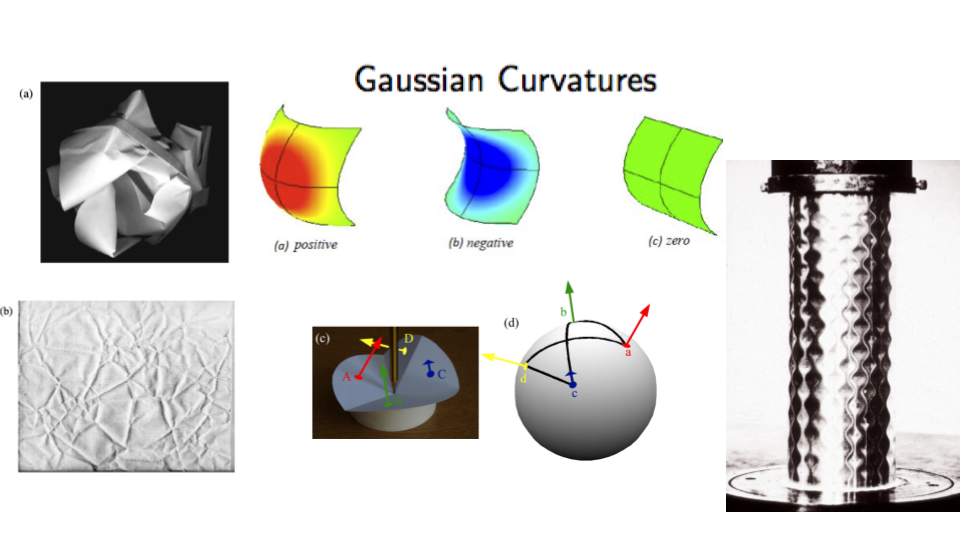
T
β-Amylase 9 Interaction Site Comparison and α-Amylase 3 Analysis as Potential Bonding Partner
Shon Taylor, Dr. Christopher Berndsen and Dr. Jonathan Monroe
Department of Chemistry and Biochemistry, James Madison University, Harrisonburg, VA 22807
Starches are used in many household items such as laundry, papers, and food. Researching into how they are broken down can help create more environment friendly products. Within the Arabidopsis thaliana (Mouse-ear cress plant), there are 9 enzymes that help break down starches known as Beta amylases (BAMS). Very little information is known about BAM9 such as the enzyme being catalytically inactive and being located within the chloroplast. One aspect that needs more research is the possible bonding partner of Beta amylase 9. Using the 21 results from yeast two hybrid and putting those results into AlphaFold, we were able to narrow the focus on to AMY3, OVA7, At5g2671, and RHM1. This was accomplished by recording amino acids located near the interaction site between BAM9 and each protein. Out of all of the complexes analyzed, only AMY3, OVA7, At5g2671, and RHM1 returned results that was not found in the decoy plot. We then looked at the amnio acid sequence to see whether the amnio acids near the interaction site of BAM9 was conserved or unique to which the 4 aforementioned proteins showed to have both traits. The amino acids near the interaction site of the 4 proteins was then analyzed with AMY3 having the highest number of conserved amnio acid. With this information, we looked more into AMY3 being a possible bonding partner of BAM9. To determine if BAM9 and AMY3 form a complex we purified both proteins separately and then used SECMALS to observe if a complex was formed upon mixing.
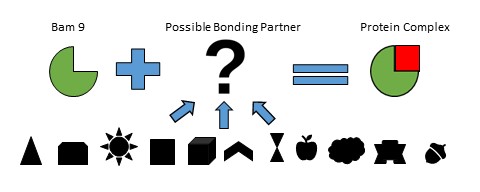
Optical characterization of Ag2GeS3 Nanostructures
Aaron Tragle1, Masoud Kaveh1, Callista Skaggs2, Xiaoyan Tan2
- Department of Physics and Astronomy, James Madison University, Harrisonburg, Virginia, U.S.A.
- Department of Chemistry and Biochemistry, George Mason University, Fairfax, Virginia, U.S.A.
As a polar thermoelectric material, Ag2GeS3 is a potential candidate for transforming heat into electricity. However, the fundamental mechanisms that govern the thermoelectric properties are not fully comprehended yet. We use Transmission Electron Microscopy and photoluminescence measurements to characterize this sample. 6 mm pallets of Ag2GeS3 samples are prepared using the conventional solid-state method with binary sulfides (Ag2S and GeS2) as starting materials. The sample is then vacuum sealed and heated up to 1000C0 for 12 hours, and held at that temperature for 168 hours. Scanning electron micrographs show semi-conical shape nanowires (NW) with a base of ~200 nm in diameter and a tip of ~50 nm. NWs are about 2 um long and are randomly oriented. Selected area electron diffraction measurements reveal a combination of both mono-crystalline and a poly-crystalline structure. High-angle annular dark-field imaging helped to map element concentration on different parts of the NWs. Room temperature Photoluminescence (PL) measurements show multiple peaks near UV, yellow-green, red and near infra-red.
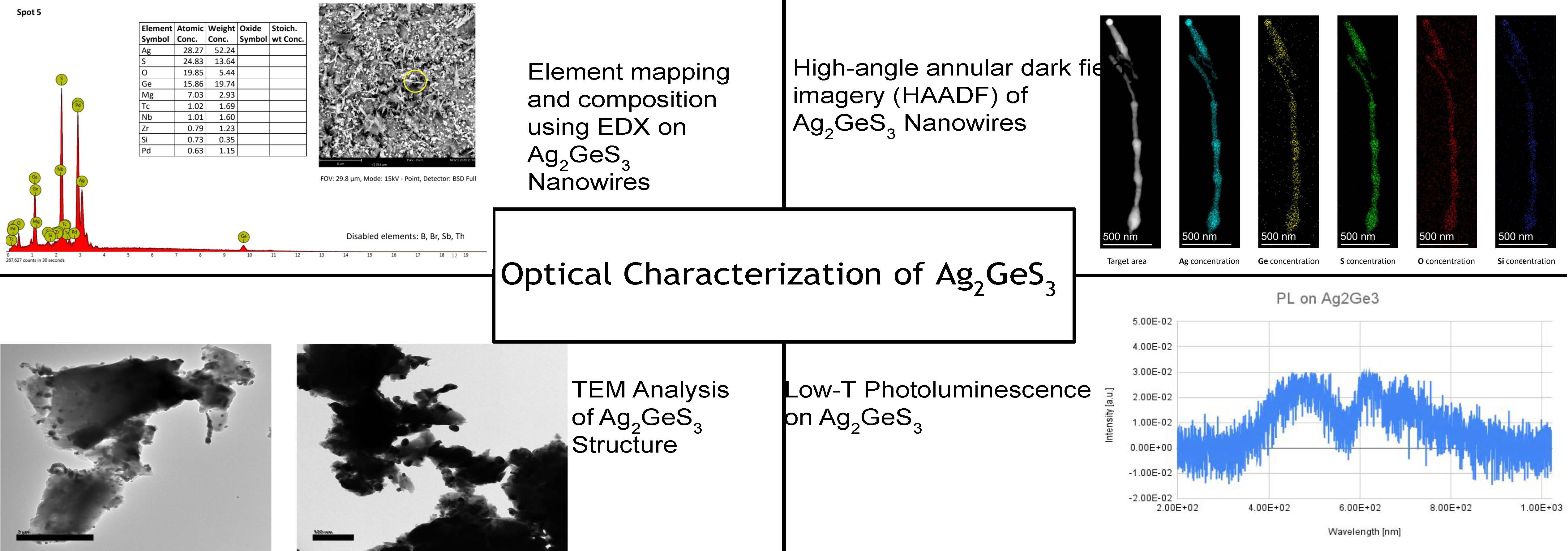
V
Using resistivity to characterize past and present groundwater flows in a karst setting to better understand the formation and evolution of owl cave and water sinks complexes in highland county, VA.
Alondra del Mar Valle, Shamsuddin Ahmed, Zoe Williams, and Dr. R Shane McGary
Geology & Environmental Science, James Madison University, 800 South Main Street, Harrisonburg, VA 22807
Cave systems and their evolution in karst are a complex process. These cave systems are caused by the distribution of soluble rocks and by the constraints of the subsurface geological structure. We know that these systems can be explored, but they have factors controlling their development that cannot be seen because they are in the subsurface, making arresting them difficult. By obtaining this information, we can better understand what changes these cave systems underwent over time. This will allow for a more accurate understanding and mitigation of potential hazards in the future. Using electrical resistivity tomography (ERT), we obtained several data sets at different locations in the Owl's Cave and Water Sinks area. With these data, we intend to characterize the resistivity structure of the subsurface along the selected profiles. To get an idea of the groundwater trajectory in the past and where it is headed in the present. Shallow resistivity values are around <50 ohm-meters, suggesting active water flow. On the other hand, very high resistivity values are about 100,000 ohm-meters, indicating the existence of voids and, therefore, may illuminate possible water flow pathways that are no longer active. It should be noted that resistivity (Ω-m) is the mathematical inverse of conductivity. In the context of regional geology, we can analyze resistivity cross sections, where we can obtain the tools to reconstruct past and present groundwater flow pathways. By doing this, we will better understand the development of cave systems in the area. In conclusion, we obtained that, in the interior of the anticlinal structure, an impermeable layer of sandstone is embedded within the limestone, functioning as the main restriction of water flow. In addition, the dip of this layer caused water pathways to migrate laterally as it subsided, driving the overall evolution of the system.

W
Foam coarsening: molecular and confinement effects
Carrie I. White and Klebert Feitosa
Aqueous foam is a tight packing of gas bubbles in a liquid stabilized by surface active molecules. Gas diffusion aided by liquid drainage drives a freshly made foam out of equilibrium causing the average bubble size to grow steadily until reaching complete phase separation in a process known as coarsening. We perform experiments to investigate the impact of gas solubility and geometric confinement on the coarsening rate of foam. We find that for gases of high solubility the foam experiences a sharp transient increase in the coarsening rate followed by a steady slow down as compared to low solubility gases. Previous studies of the impact of foam confinement to a surface of negative gaussian curvature suggests that bubbles of all sizes grow irrespective of the number of nearest neighbors, in contrast to the growth in a zero gaussian curvature surface. We investigate this prediction in the growth of foam inside a narrow gap in the shape of a pseudosphere.
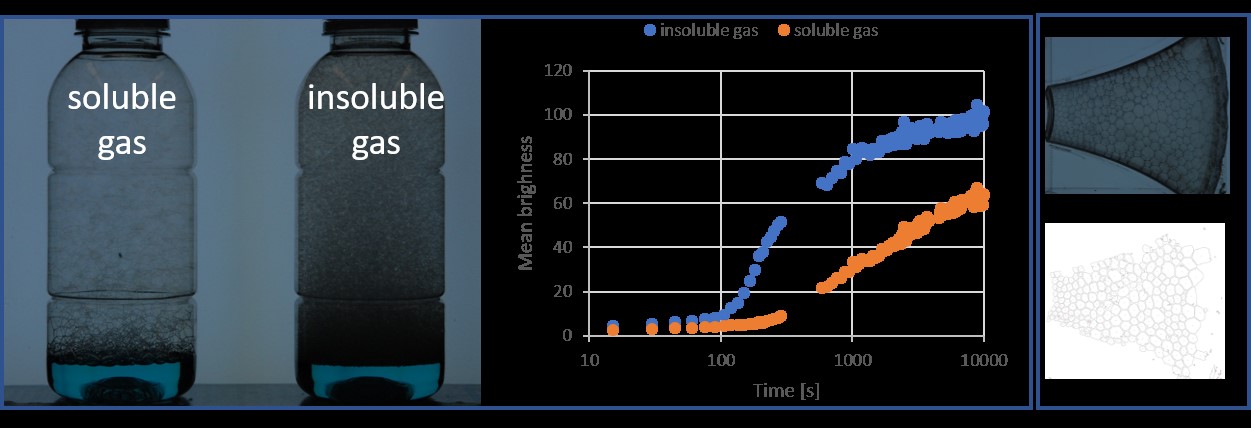
Using Minecraft to Simulate Field Mapping in a Karst Environment
Zoe Williams, Shamsuddin Ahmed, Alondra del Mar Valle-Hernández, and Dr. R Shane McGary
Department of Geology & Environmental Science, James Madison University, Harrisonburg, VA 22807
Geological Sciences Department, Ohio University, Athens, OH 45701
Department of Geological and Environmental Sciences, Appalachian State University
Geology Department, University of Puerto Rico – Mayaguez
Geoscience courses often require some amount of hands-on field work, which can be an extremely effective way to teach new concepts as students can work through data collection, increase their spatial reasoning, and develop their own working hypotheses and interpretations. However, many students may face challenges that prevent them from participating in traditional field work such as mobility impairments, geographic location being devoid of karst, harsh weather, or other personal events and circumstances. In order to make field work more accessible in a classroom setting, we have developed an educational module in the popular video game Minecraft. Minecraft is an underutilized yet ideal tool for education given the accessibility of the program and creative freedom that it allows its players. Being the highest-selling game of all time, many students will also already have experience with the game, leading to a much shorter learning curve compared to other educational programs. In the module, players are able to freely explore a 3-D simulation of a real-life area that includes two caves, many sinkholes, and rock outcroppings that they may take data from. The students will then use this data to develop a geological interpretation on the of the region to potentially include an understanding of the formation and evolution of the cave systems. In the future, students will be able to take their own custom resistivity lines anywhere in the map. This will allow them to see the subsurface resistivity data within the game and discover hidden subsurface features in locations that they hypothesize to include interesting voids, streams, and more. The Minecraft world can be exported into a format that can allow for the formation of a synthetic resistivity data set. This gives students the ability to confirm or challenge their preferred geologic interpretation.
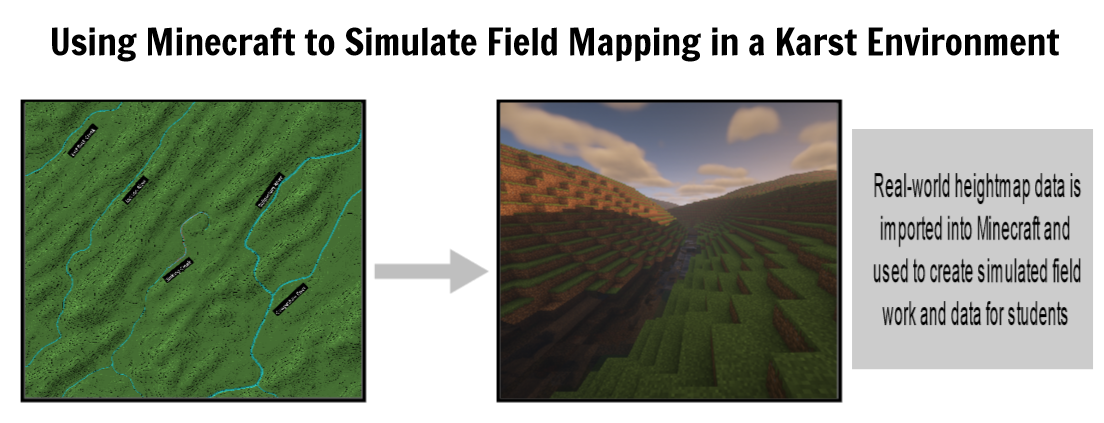
Y
Examining the Structural Deformation at Cave Hill Using LiDAR-SLAM Technology
Veronika Yurchenko, A. Garcia Jr.
Department of Geology and Earth Science, James Madison University, Harrisonburg, VA 22807
Karst environments form when soluble rocks dissolve when exposed to natural waters. Karst is one of the most common physiographic regions in Virginia, especially observed in the Shenandoah Valley where limestones are abundant. Due to the large karstic region, it has become necessary to study karst environments in order to better understand the relationship between limestone dissolution and void growth. This study is based in Cave Hill located in the town of Grottoes, Va. The dominating lithology in Cave Hill is the Conococheague Formation, a microcrystalline limestone, interbedded with sandstone and dolostone of the Cambrian age. It contains Grand Caverns, the oldest national show cave, as well as 11 other explored caves. Previous research using electrical resistivity in void spaces found subsurface water flows and pathways which resulted in the discovery of Cave Hill being both a syncline and an anticline. Other research looked into the deformation of Cave Hill. The sedimentary rock strata began as horizontal deposits and now it’s steeply inclined; some of the beds in the caves are vertical. This study continues working at understanding karstic subsurfaces at Cave Hill with the use of LiDAR (Light Detection and Ranging) with SLAM (simultaneous localization and mapping) technology, this system has the capability to construct a high-resolution point cloud of void spaces without the need of constructing stations. This project seeks to use LIDAR-SLAM data to observe the internal deformation in Cave Hill by using strike and dip data from inside caves to understand further the structural deformation in Cave Hill, as well as avoid orientation and scale.
